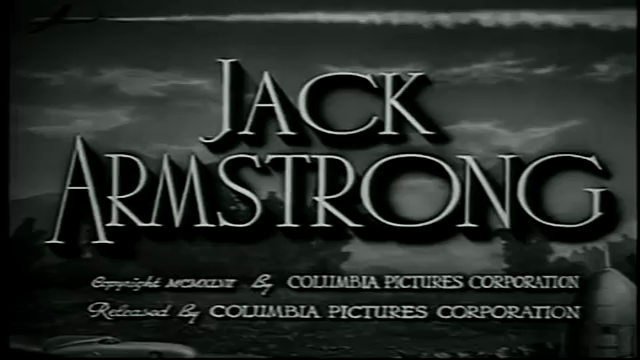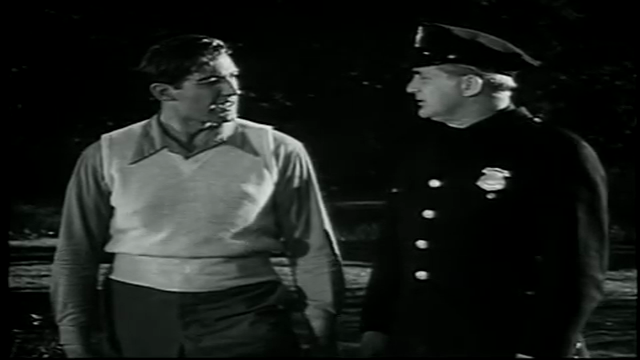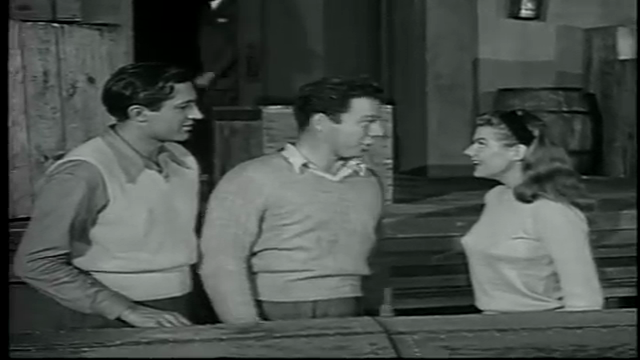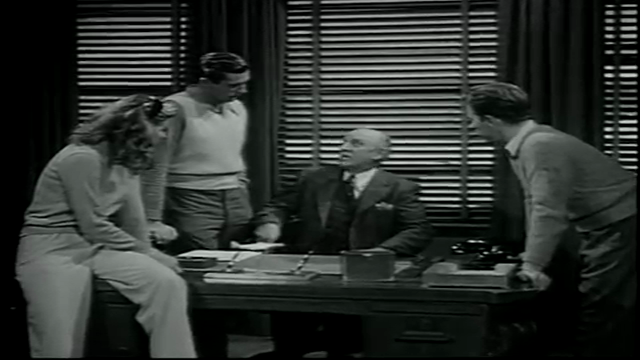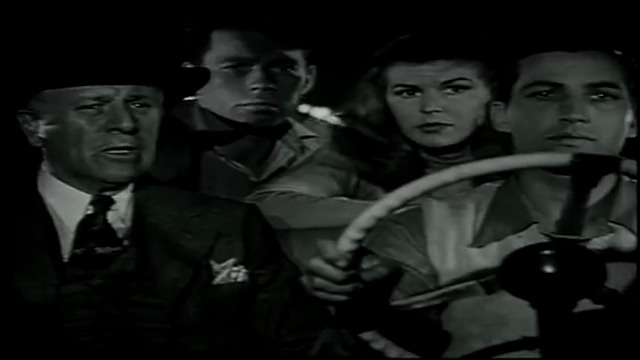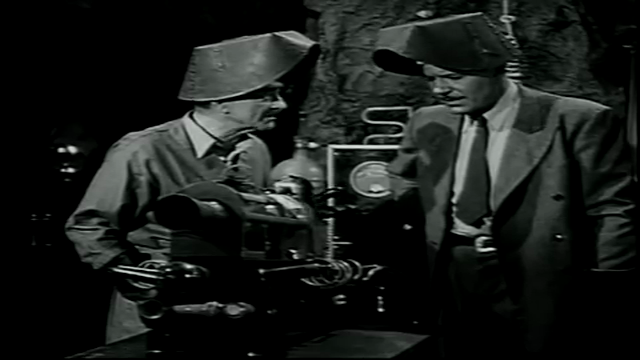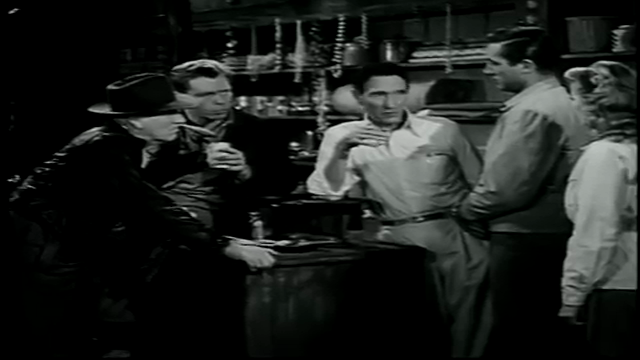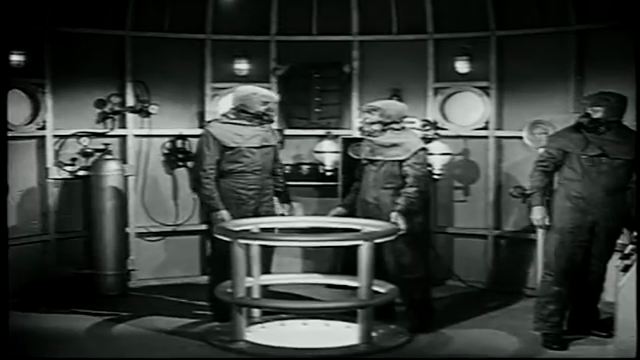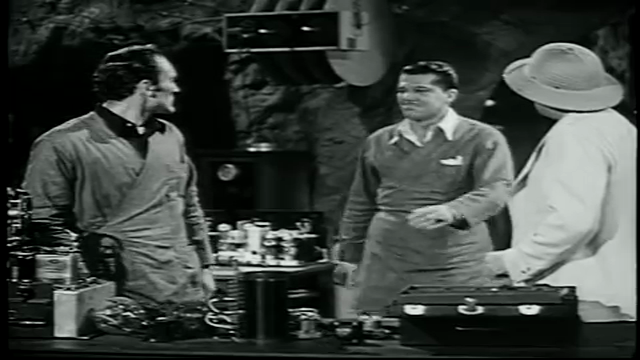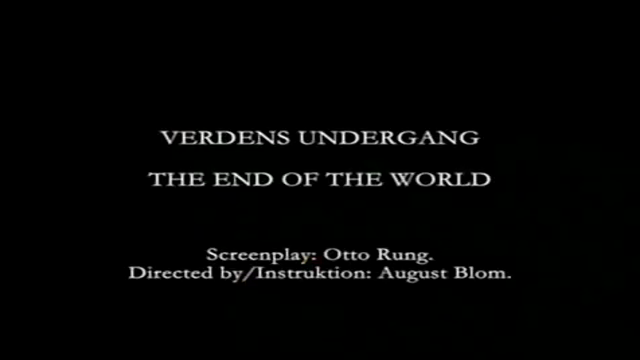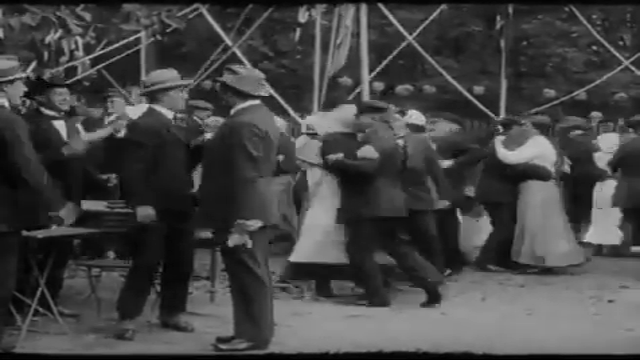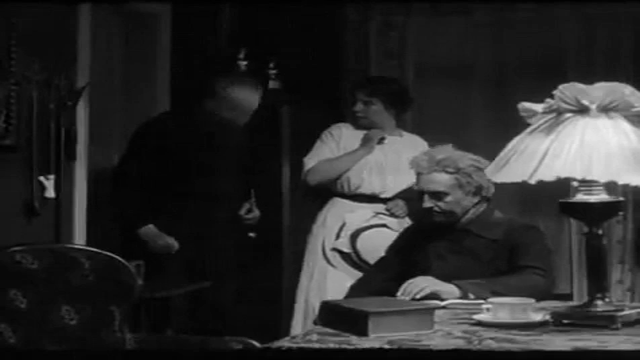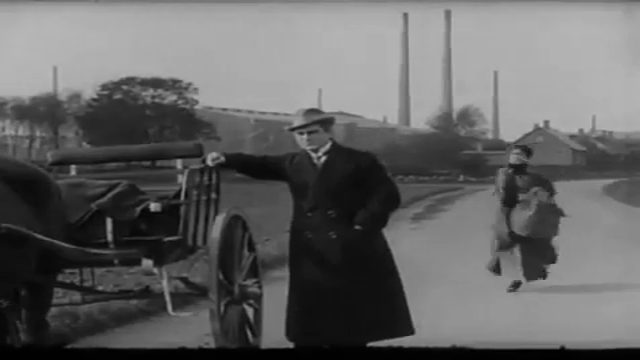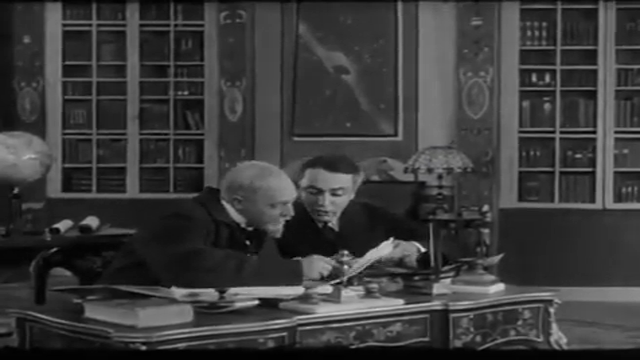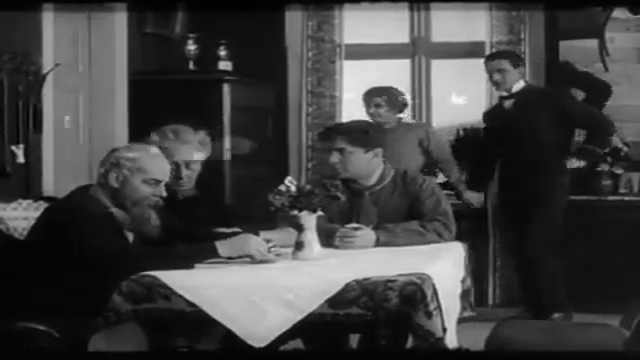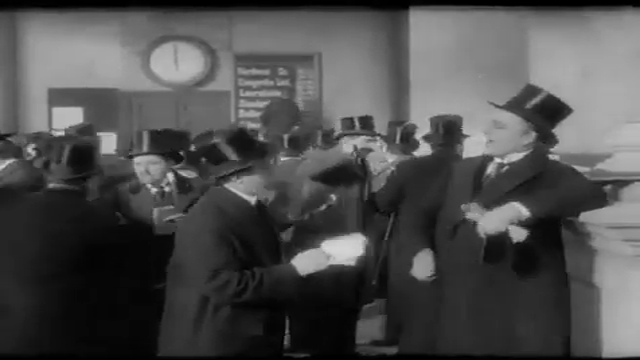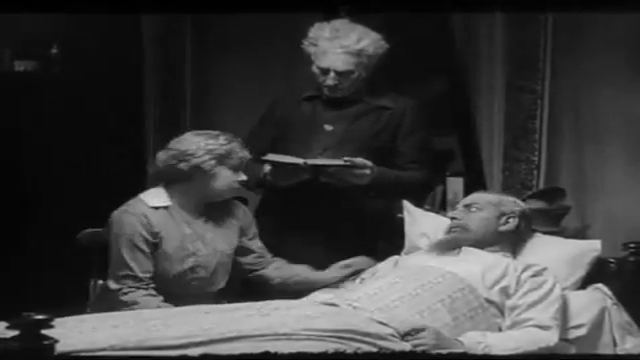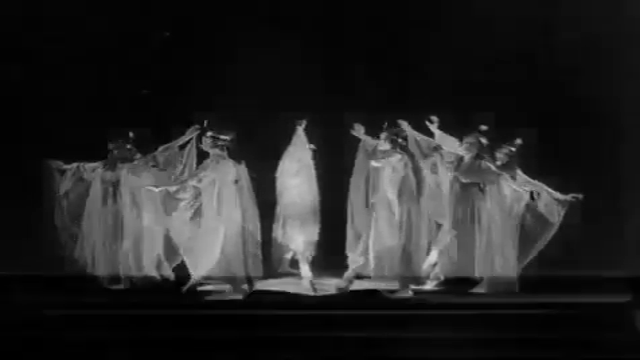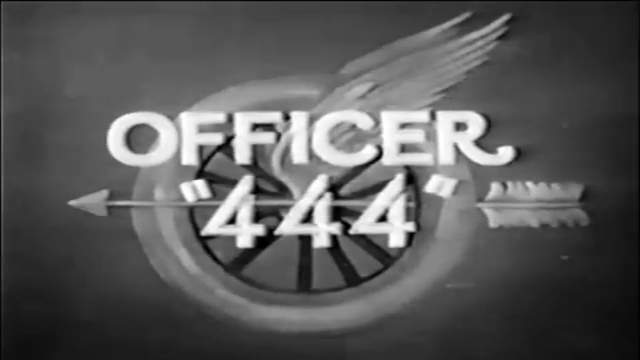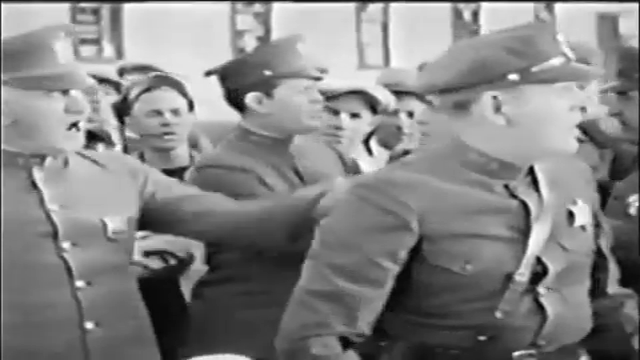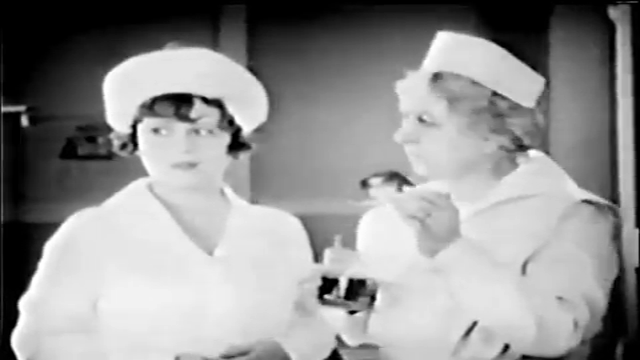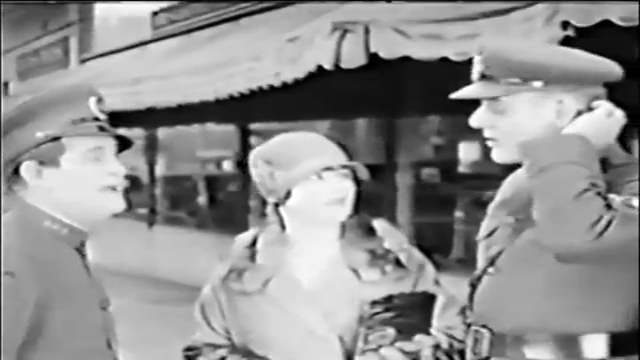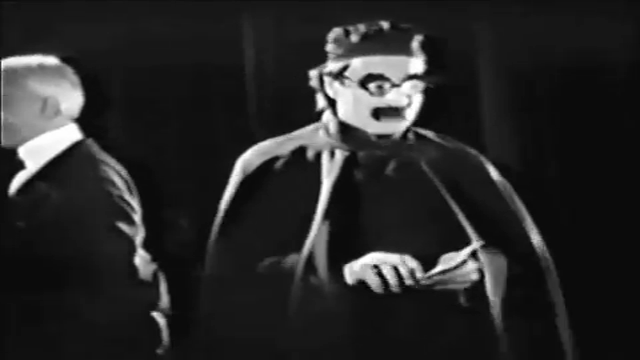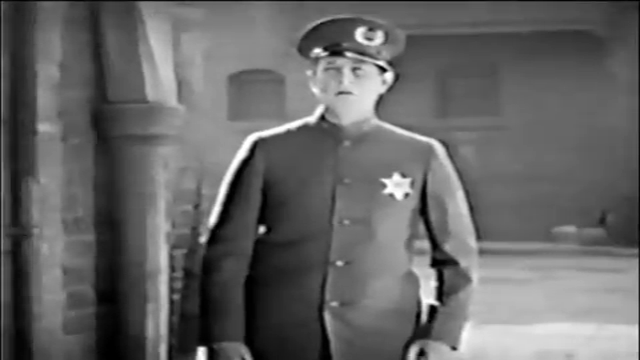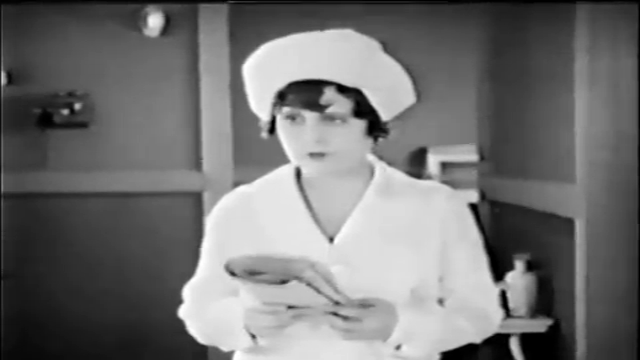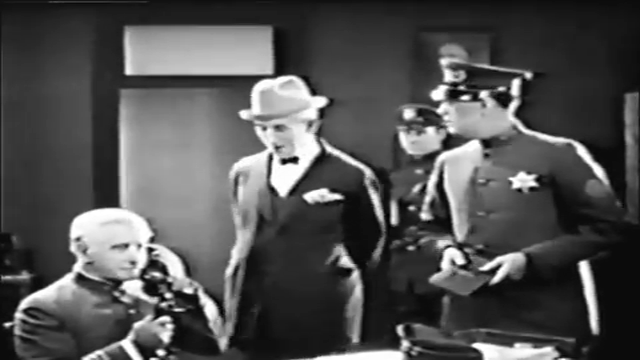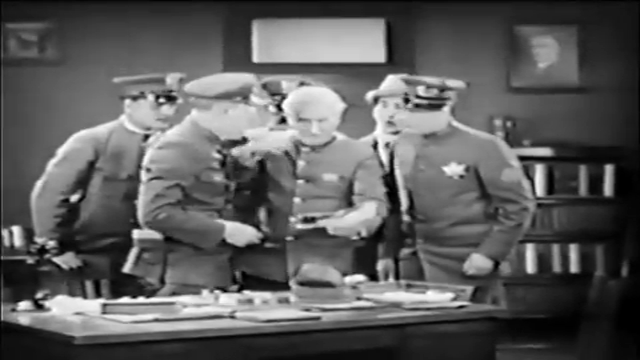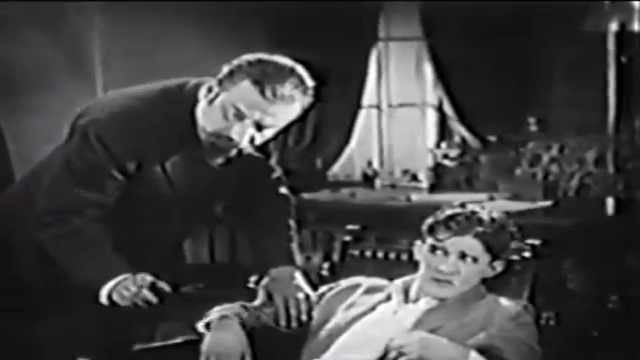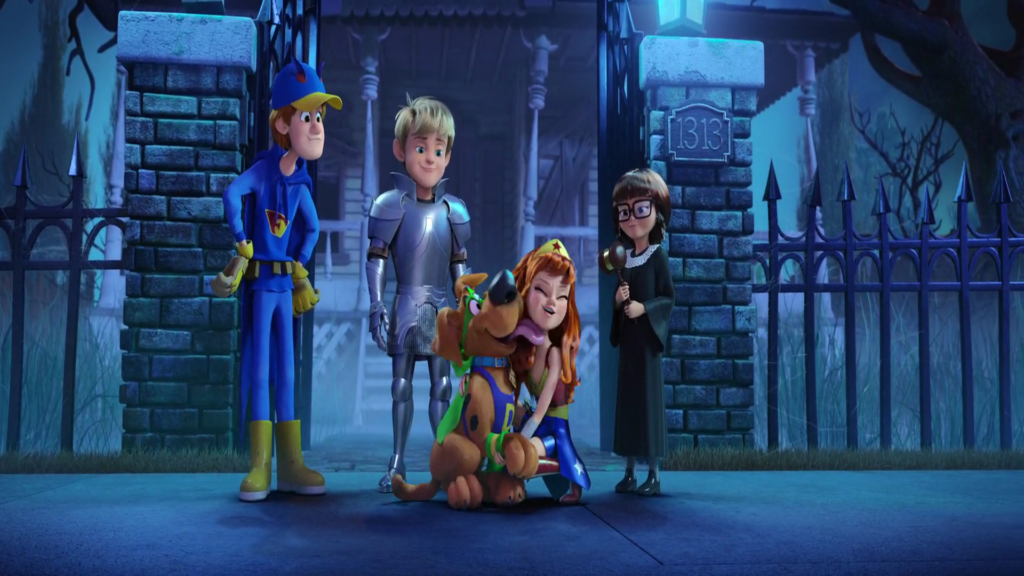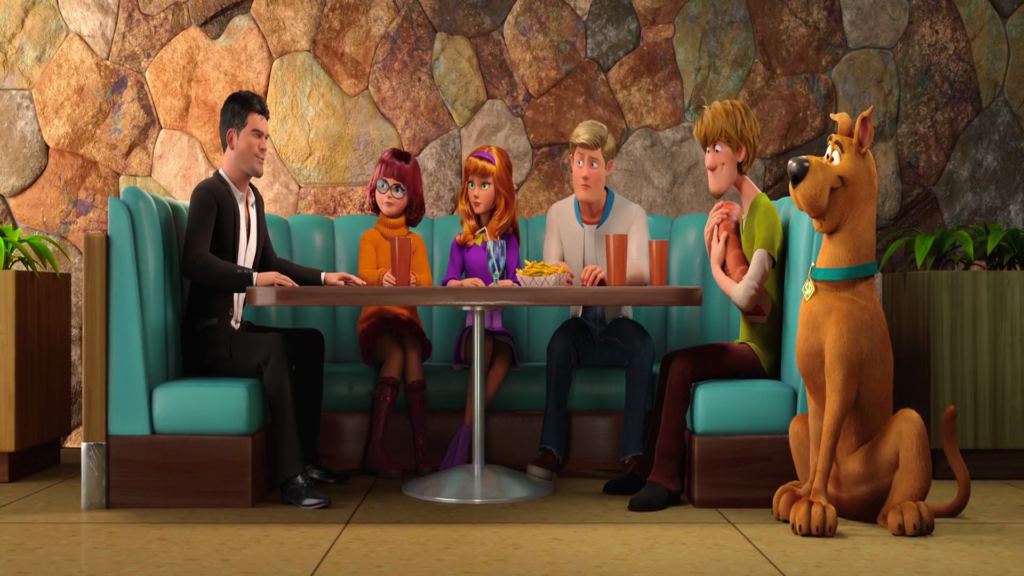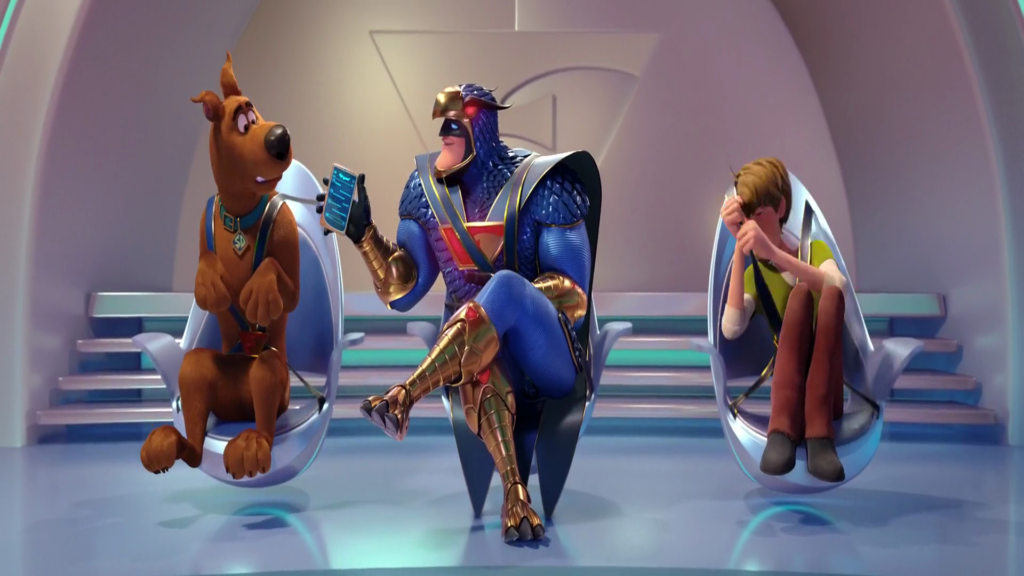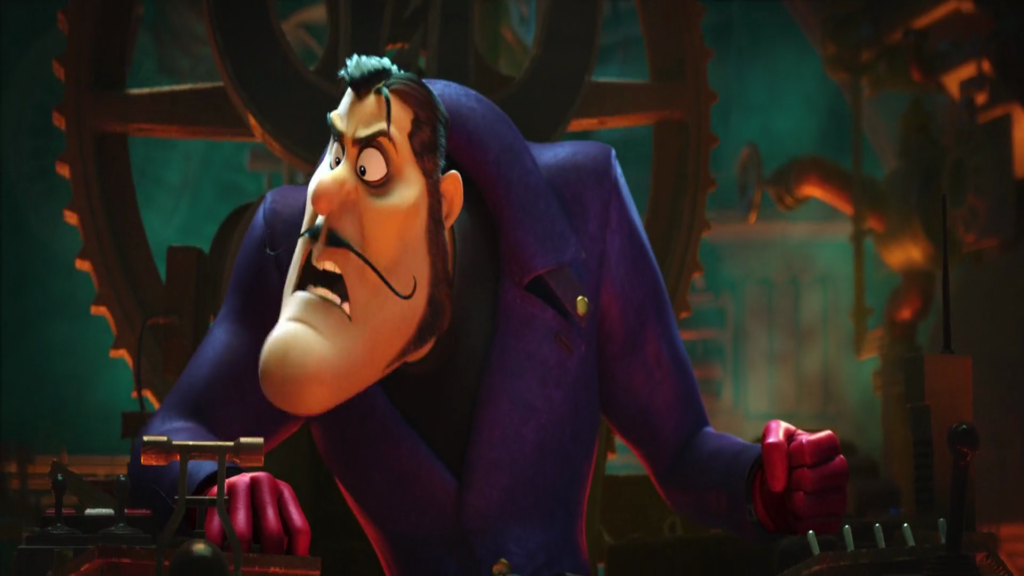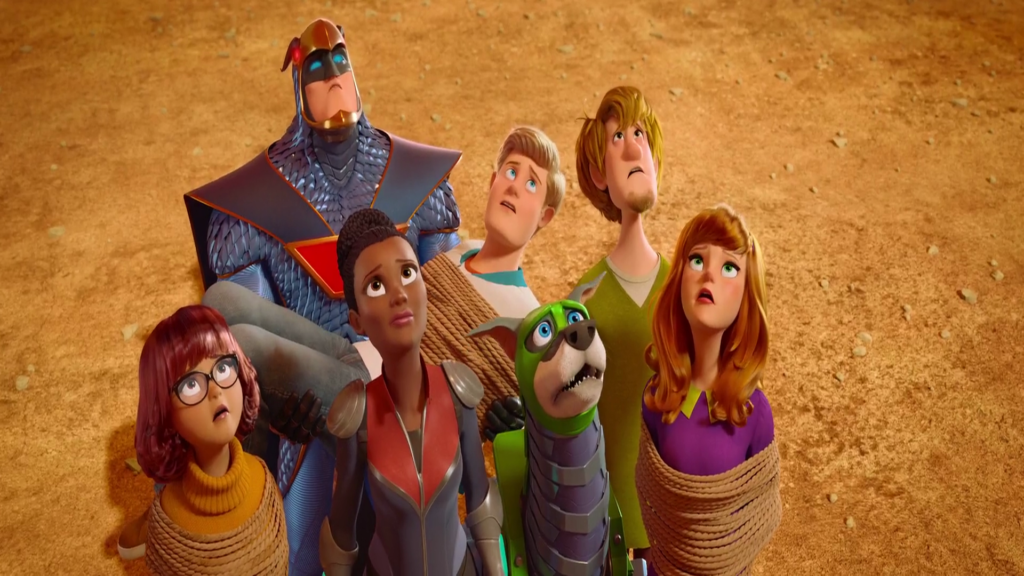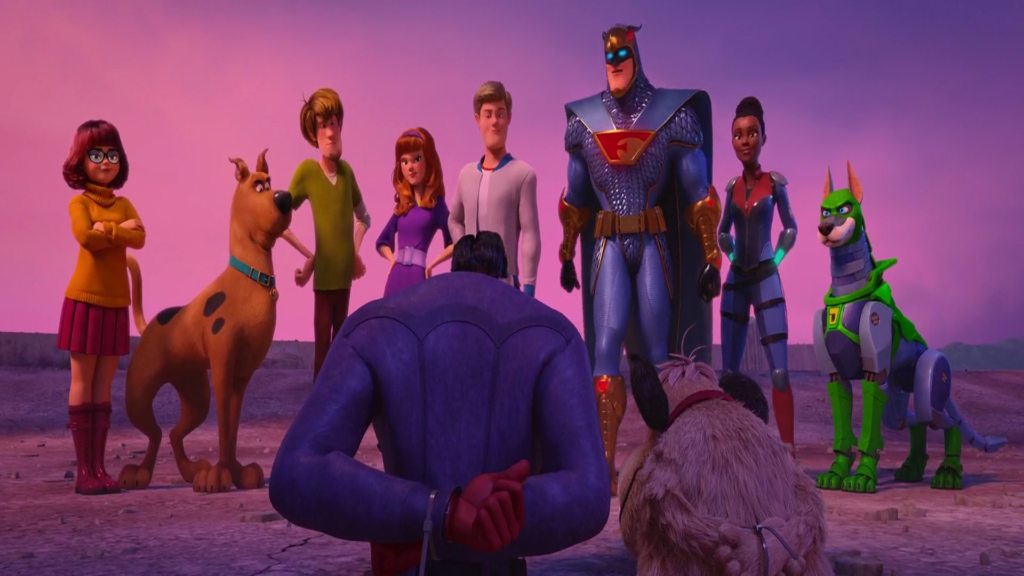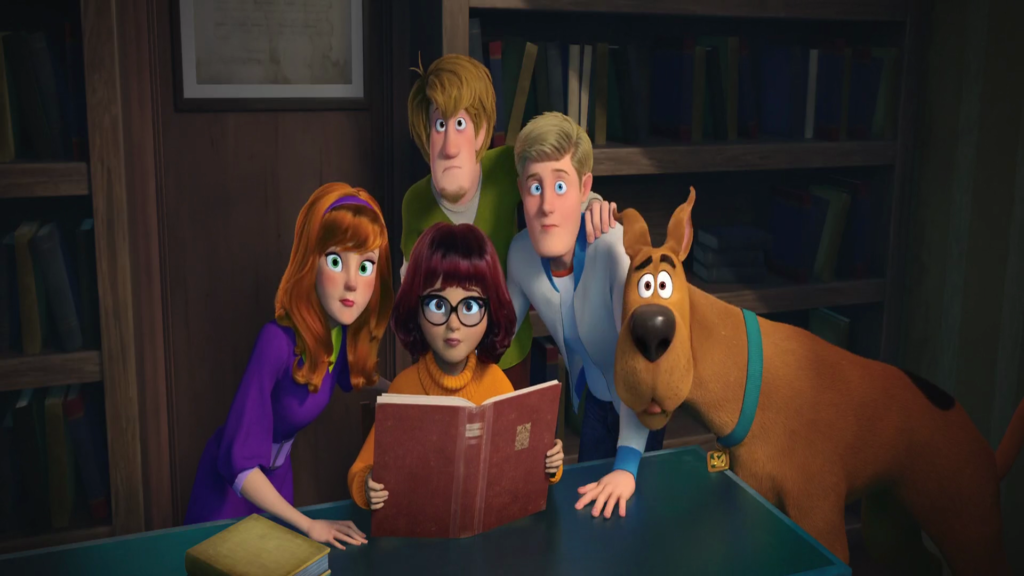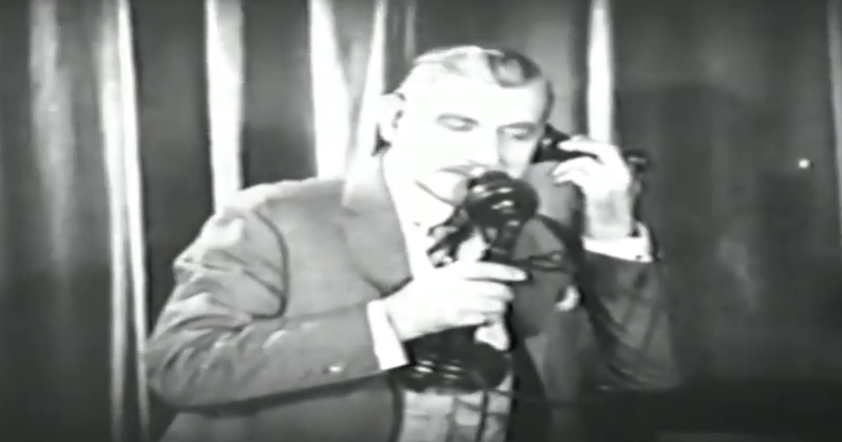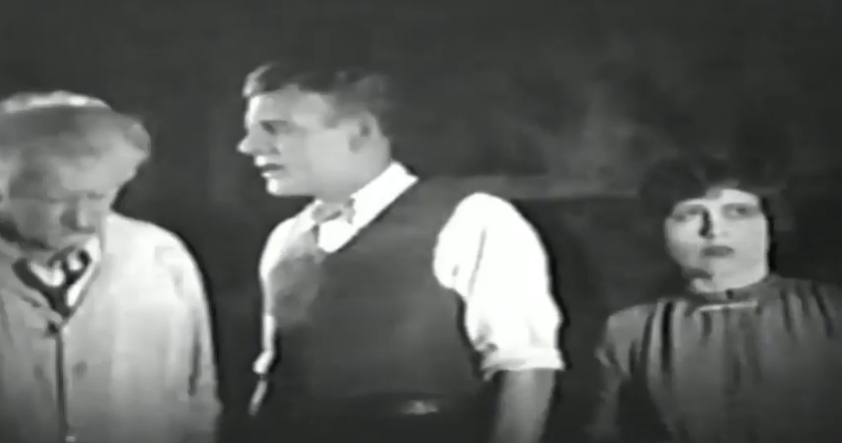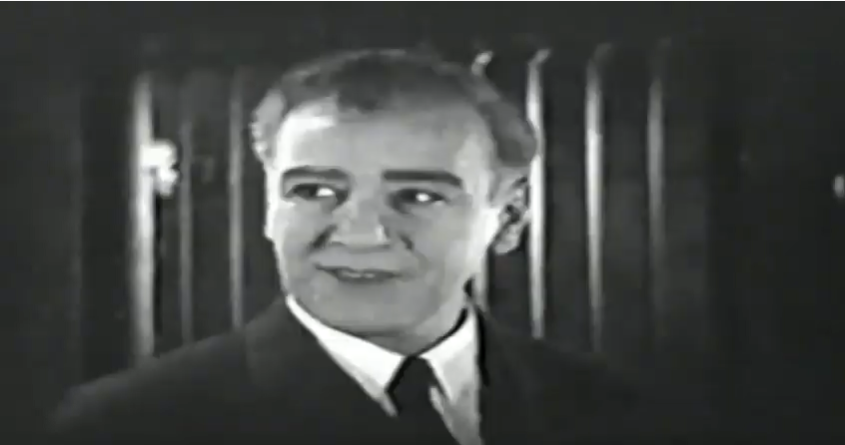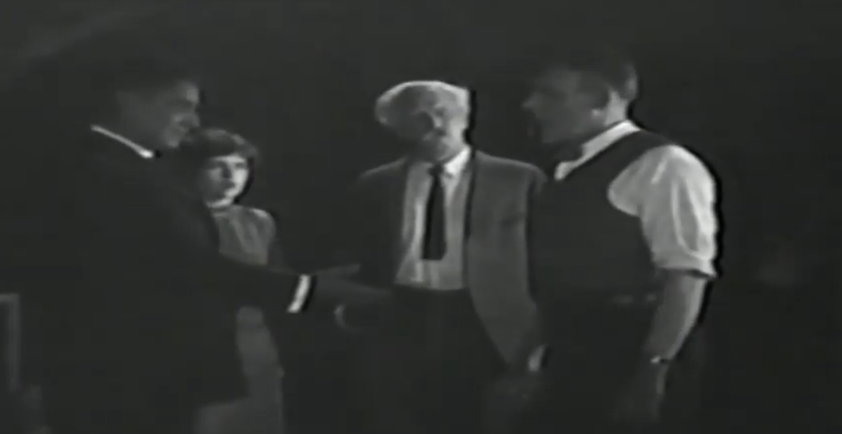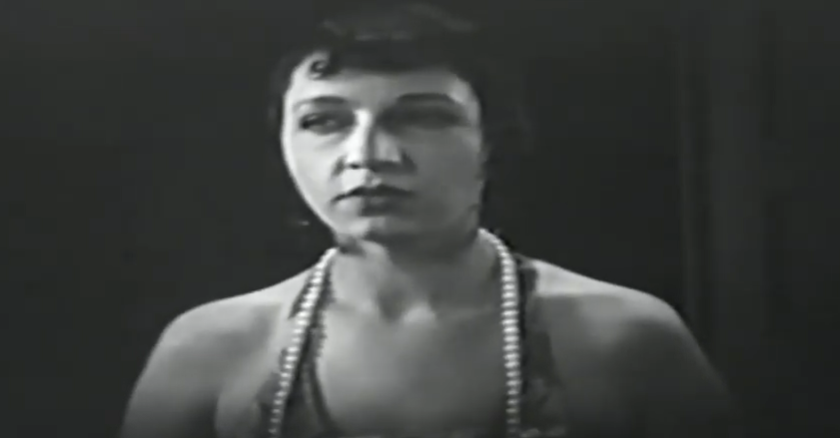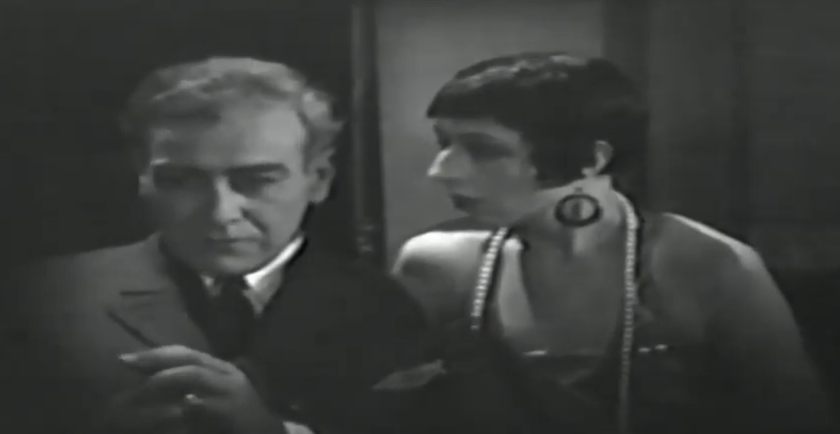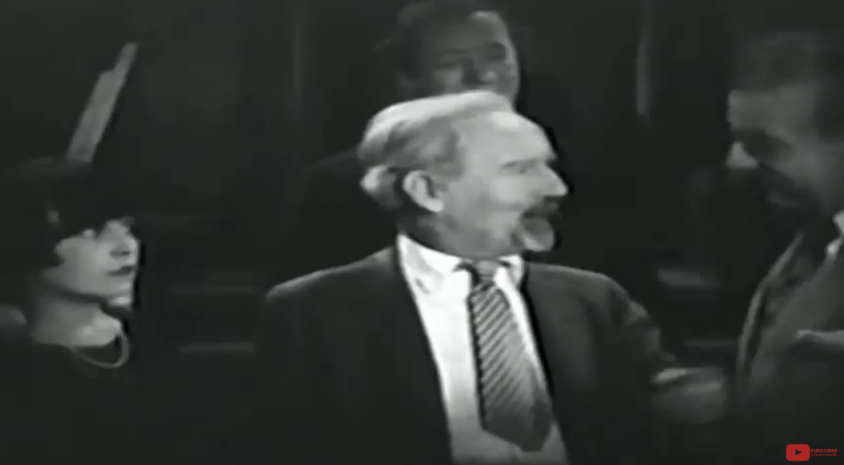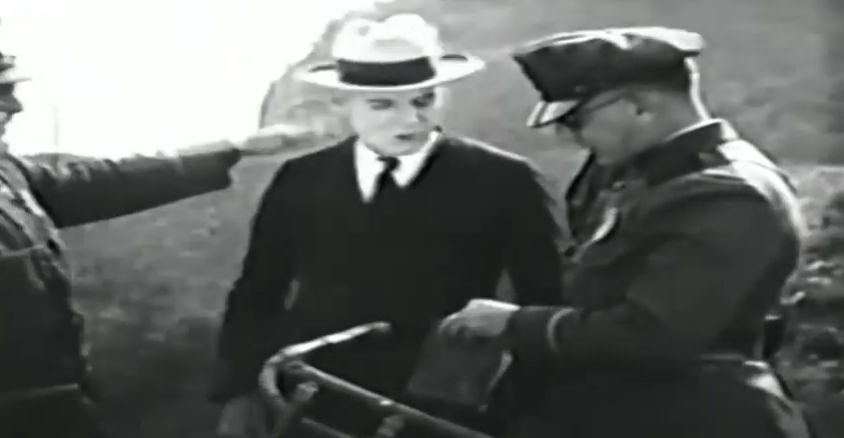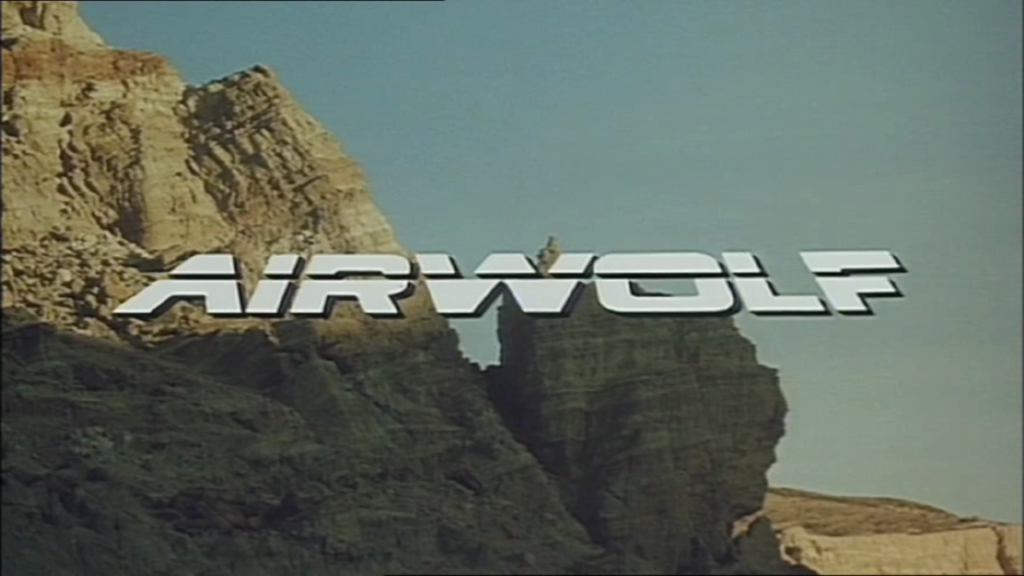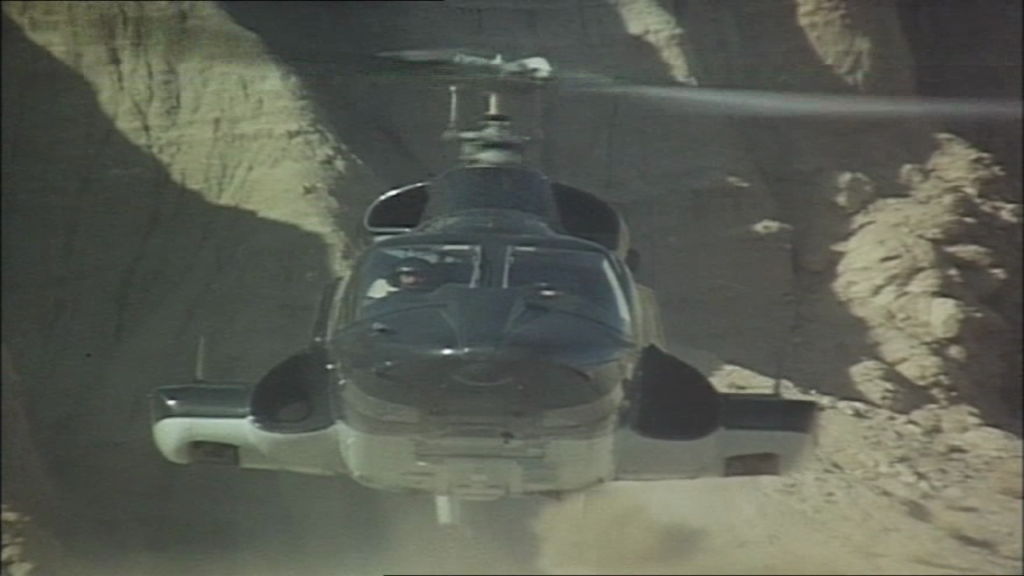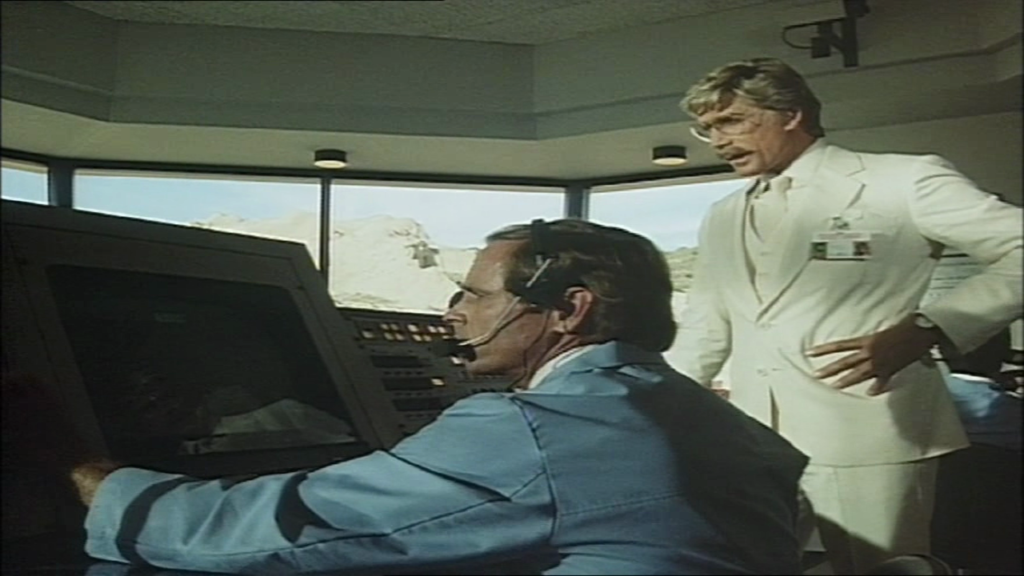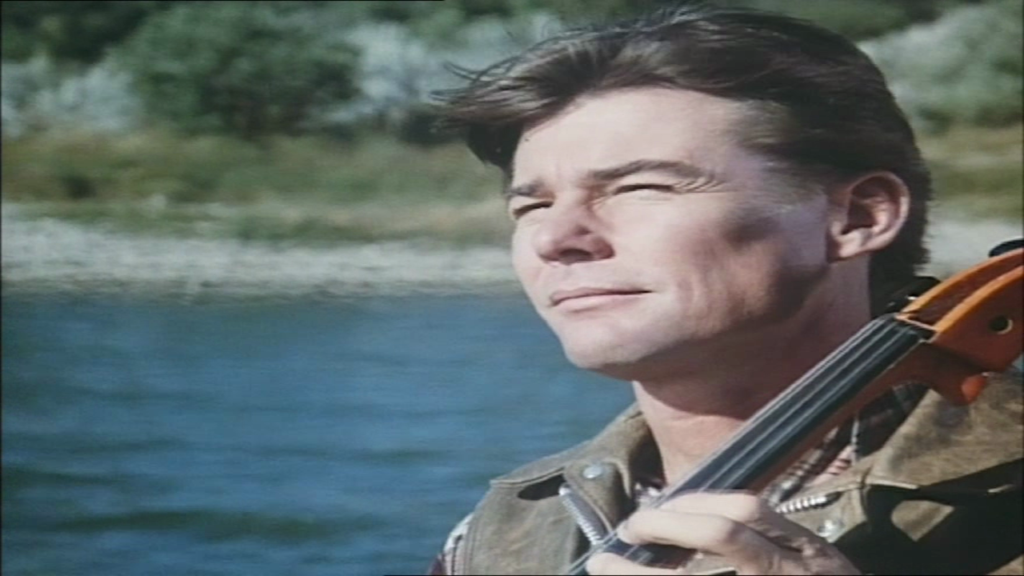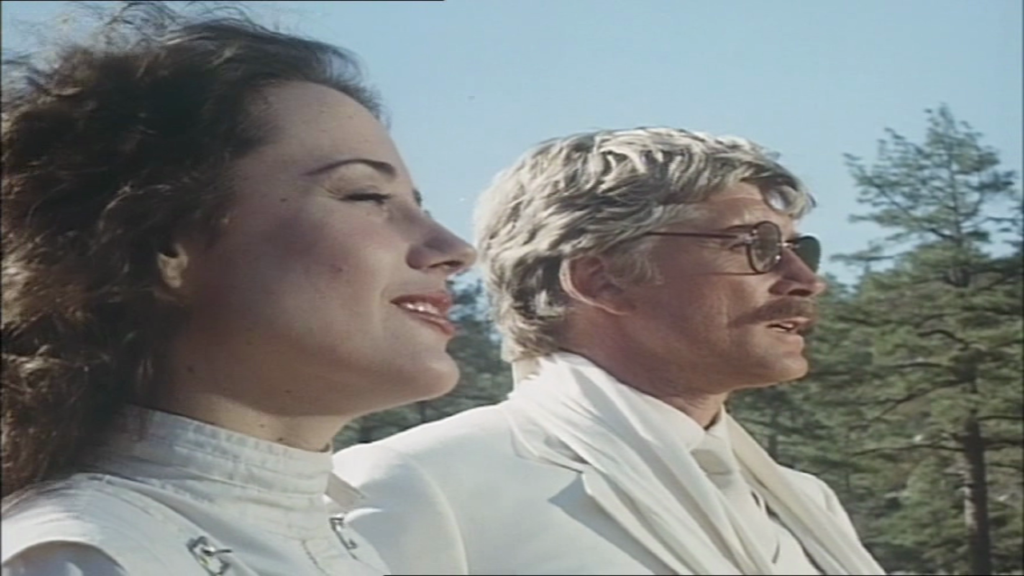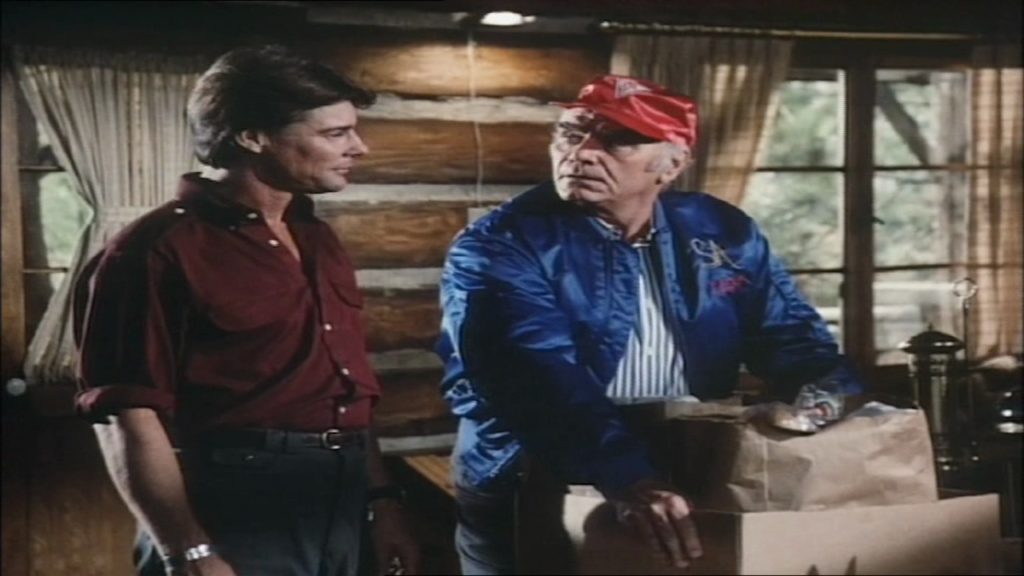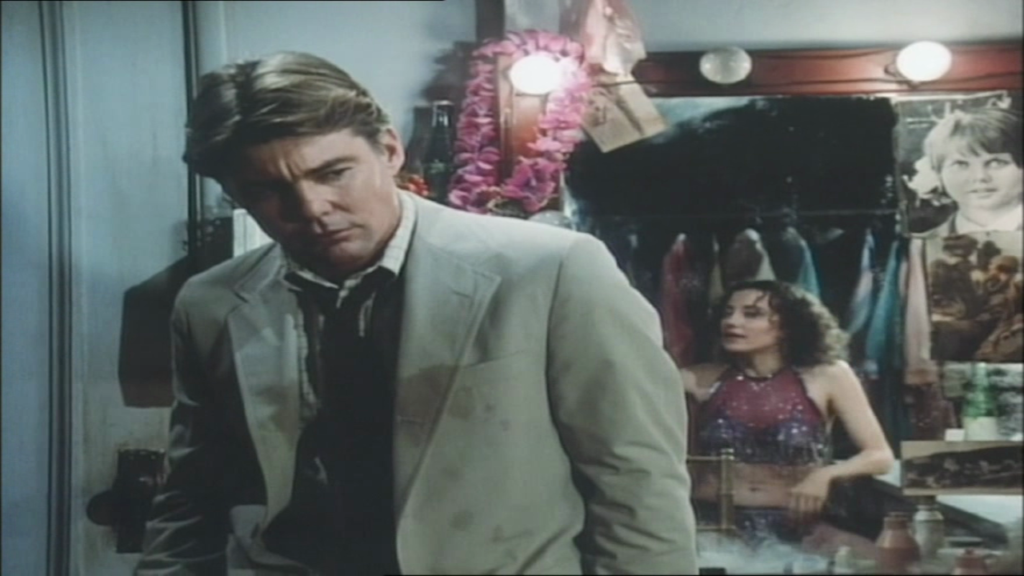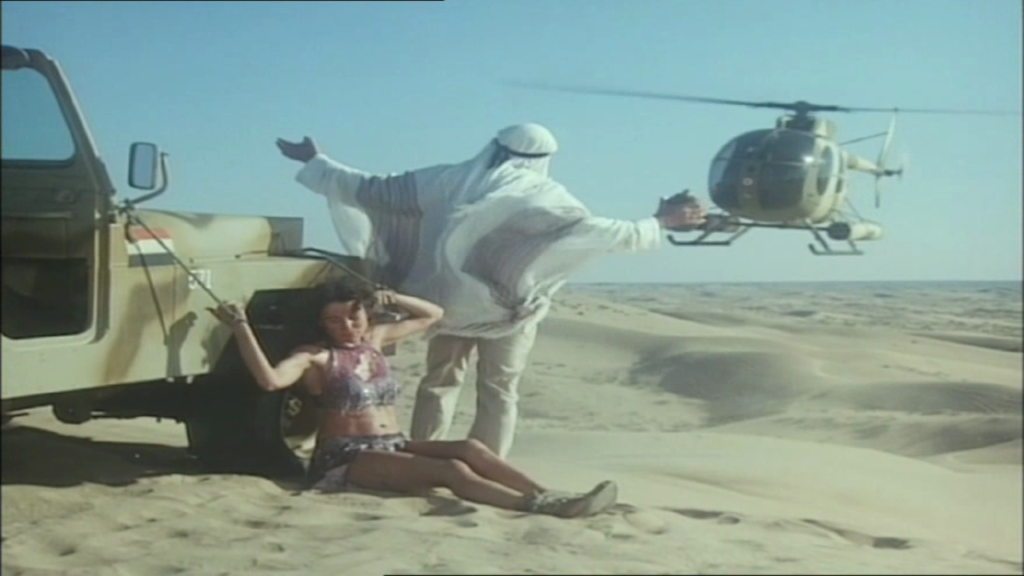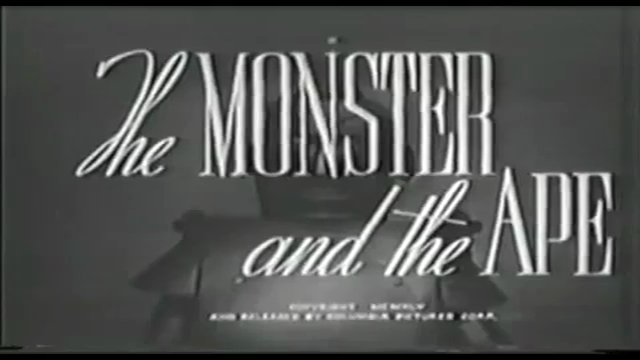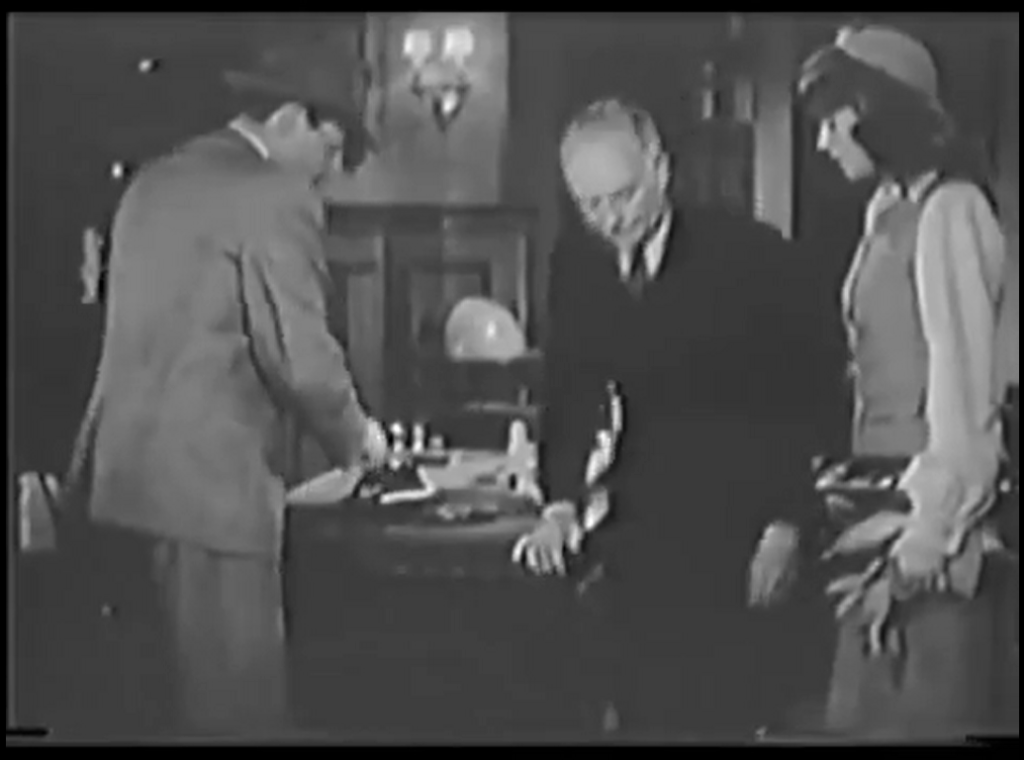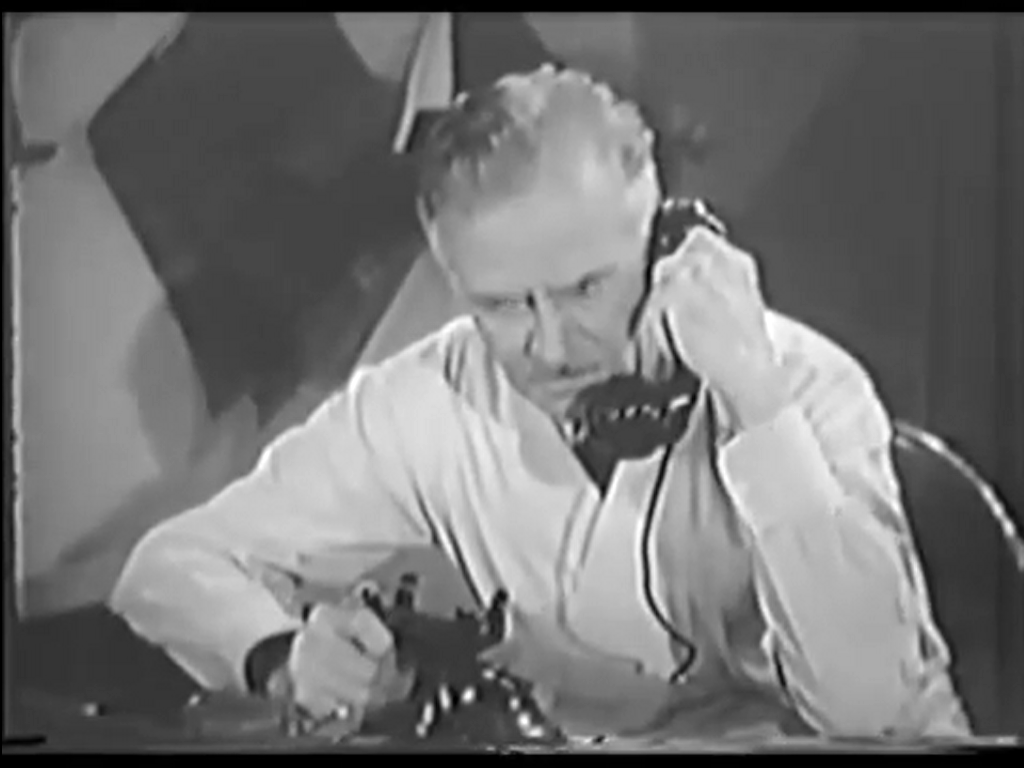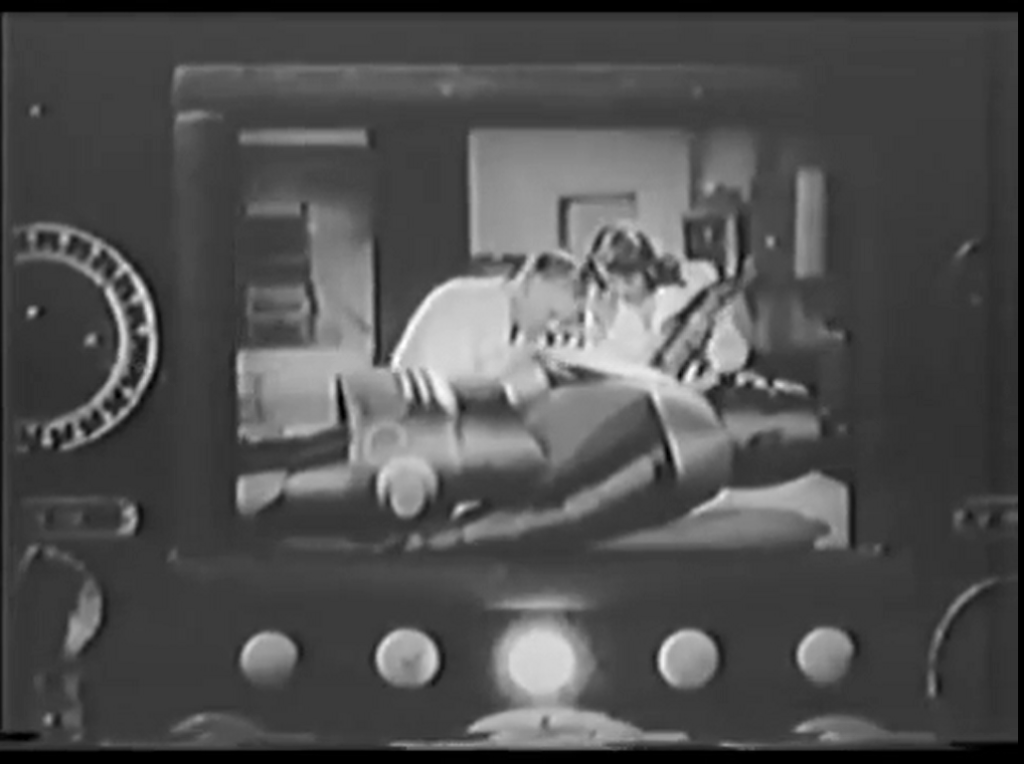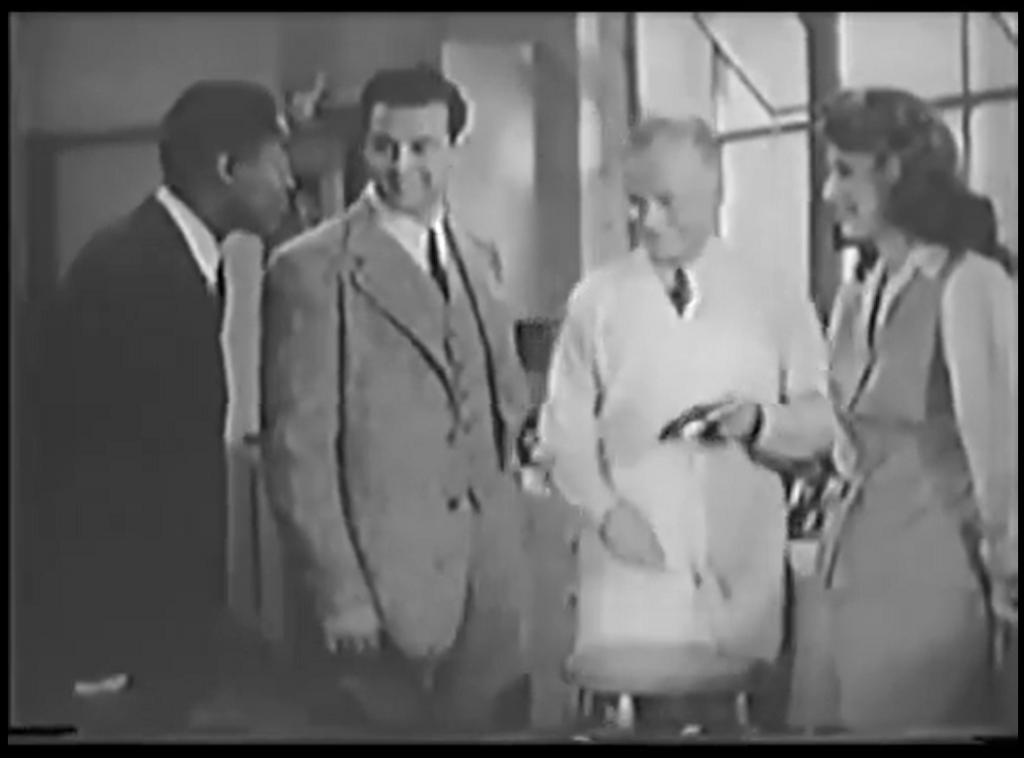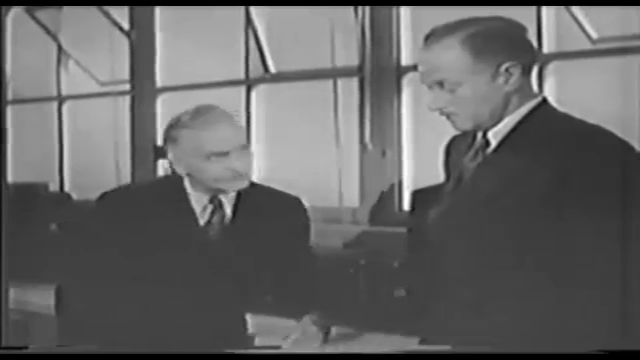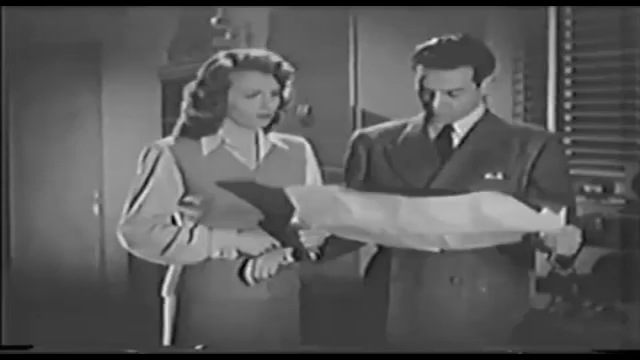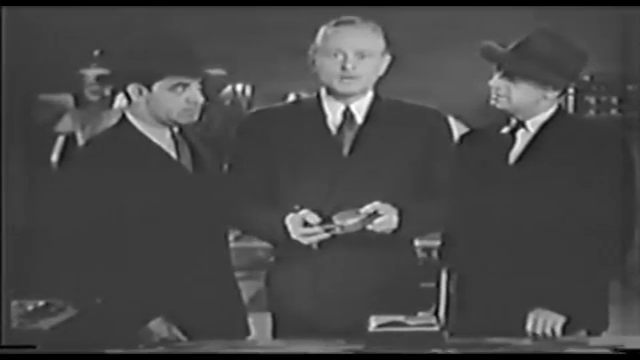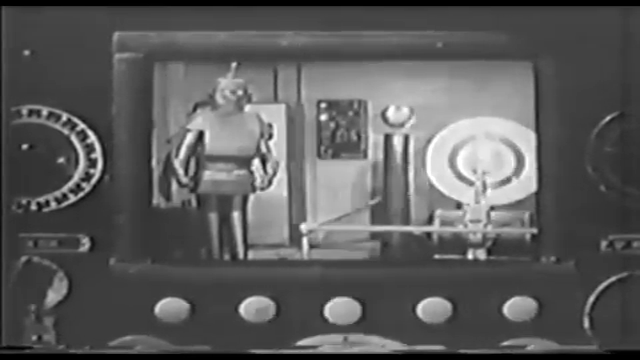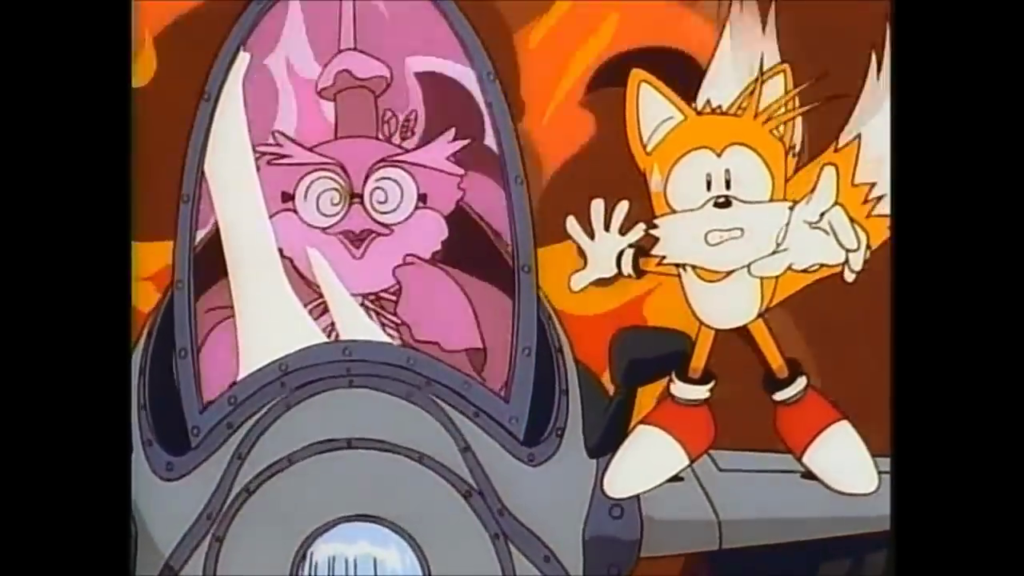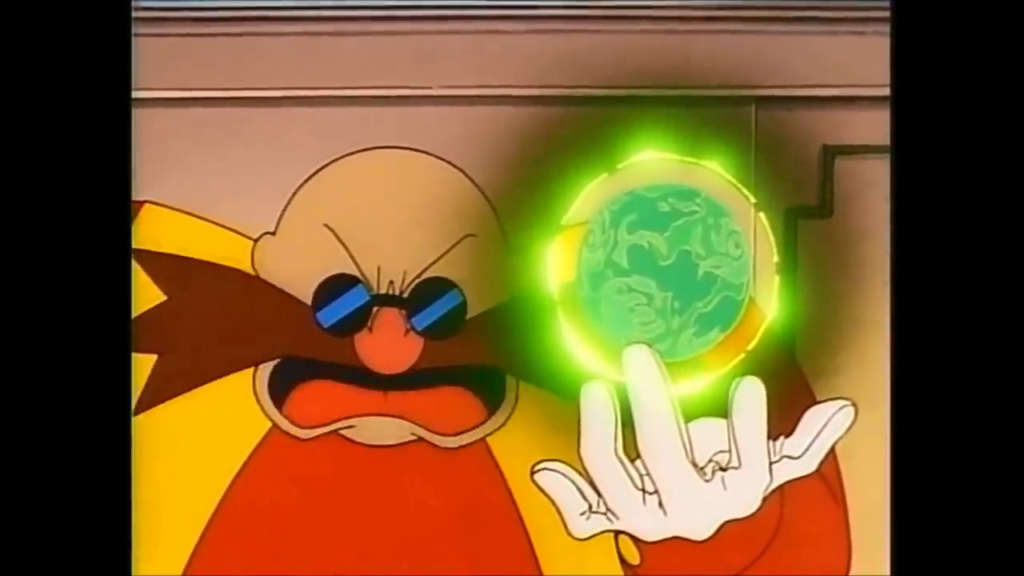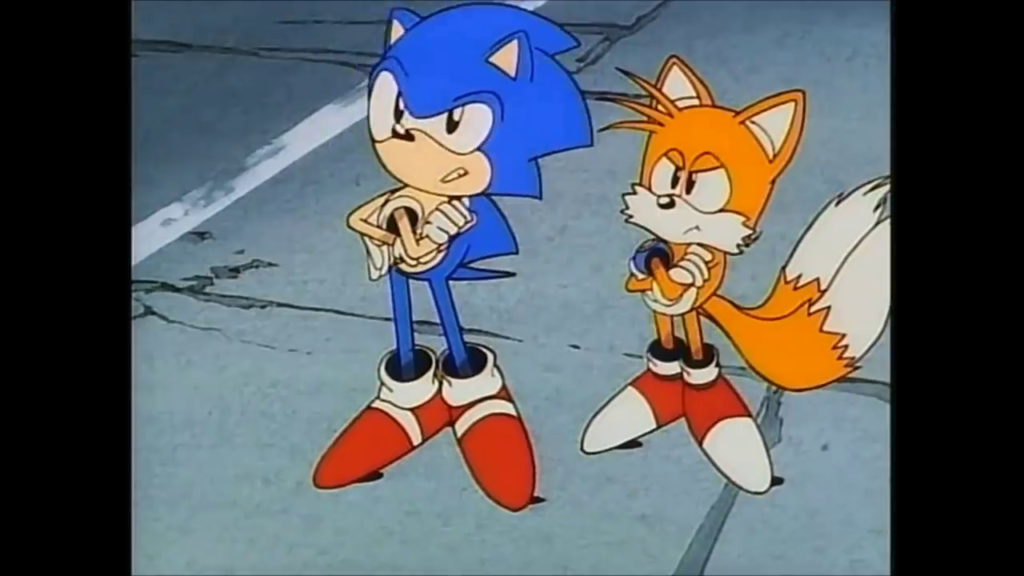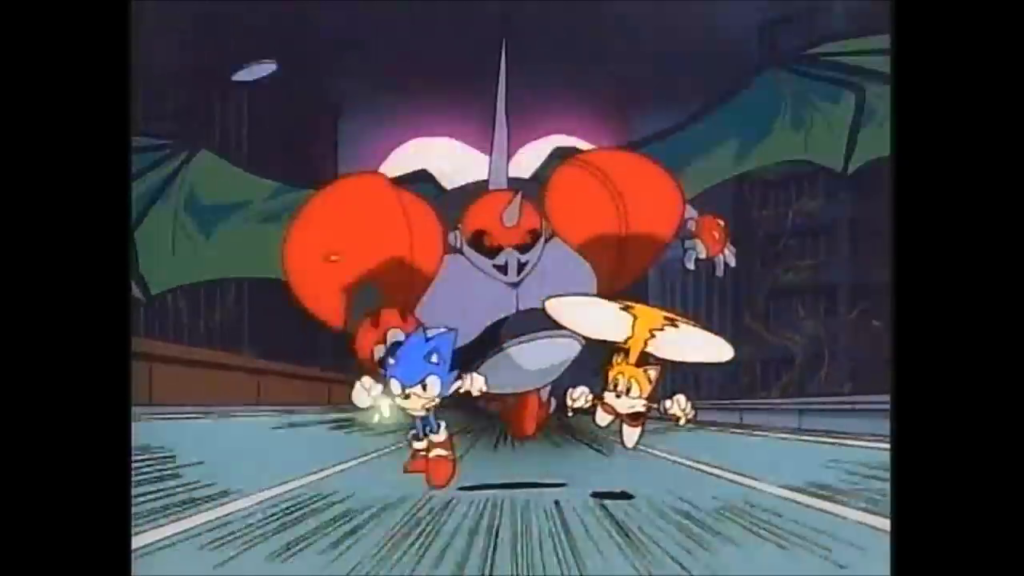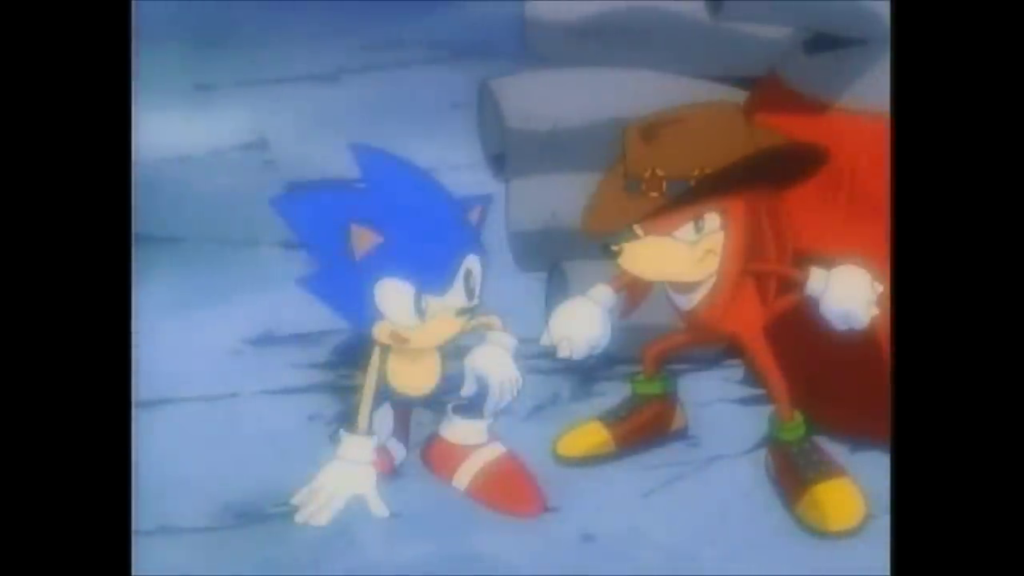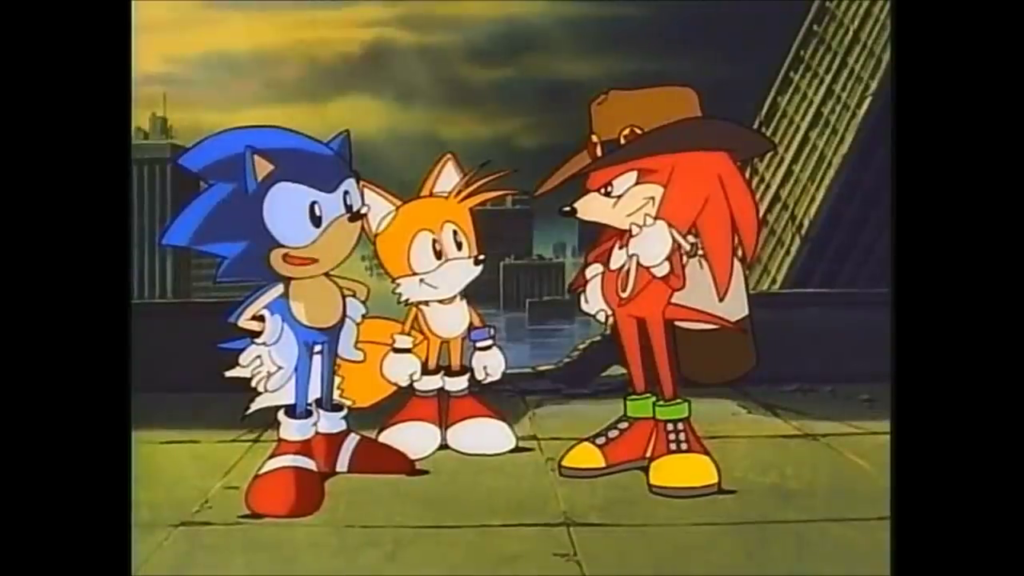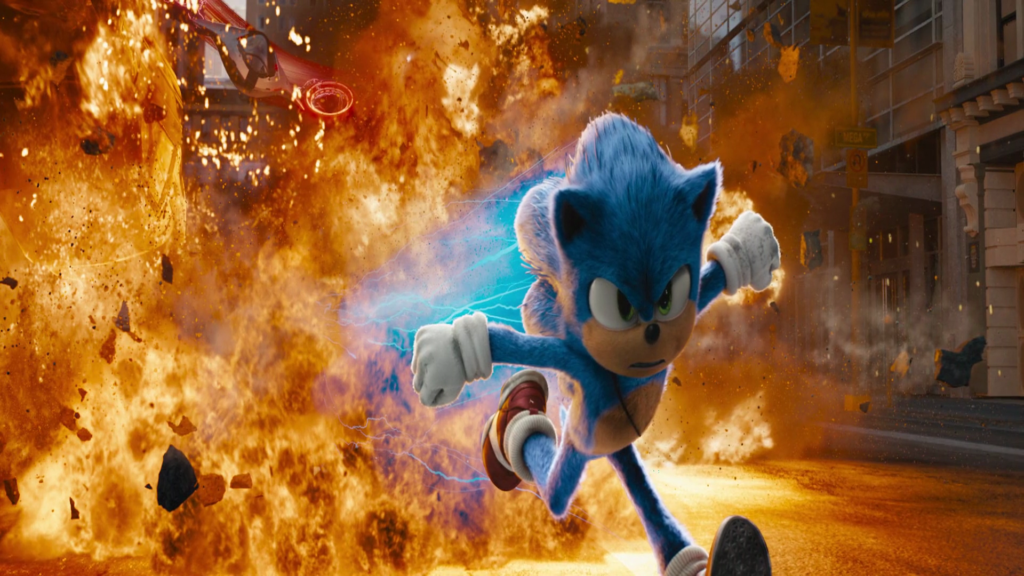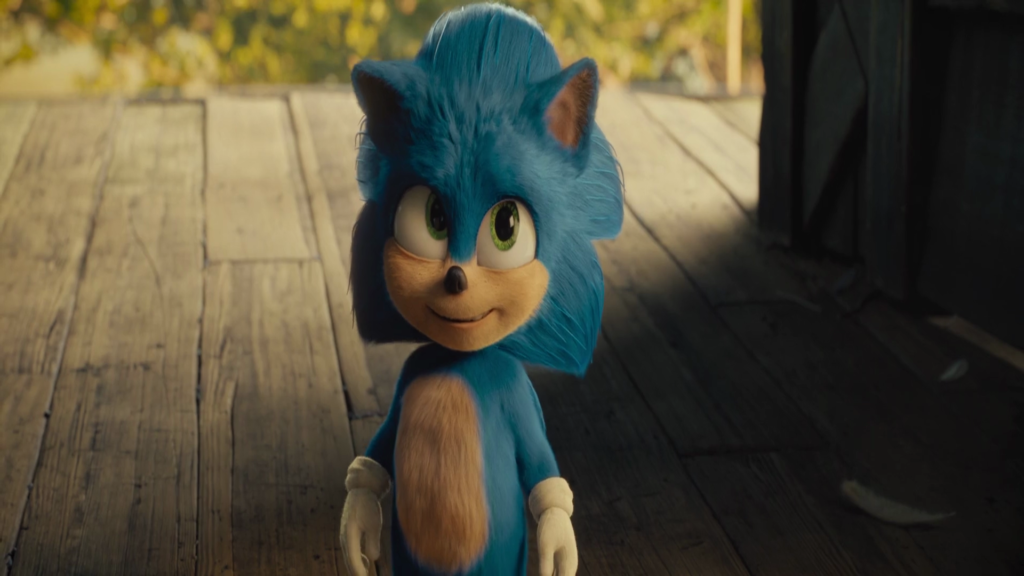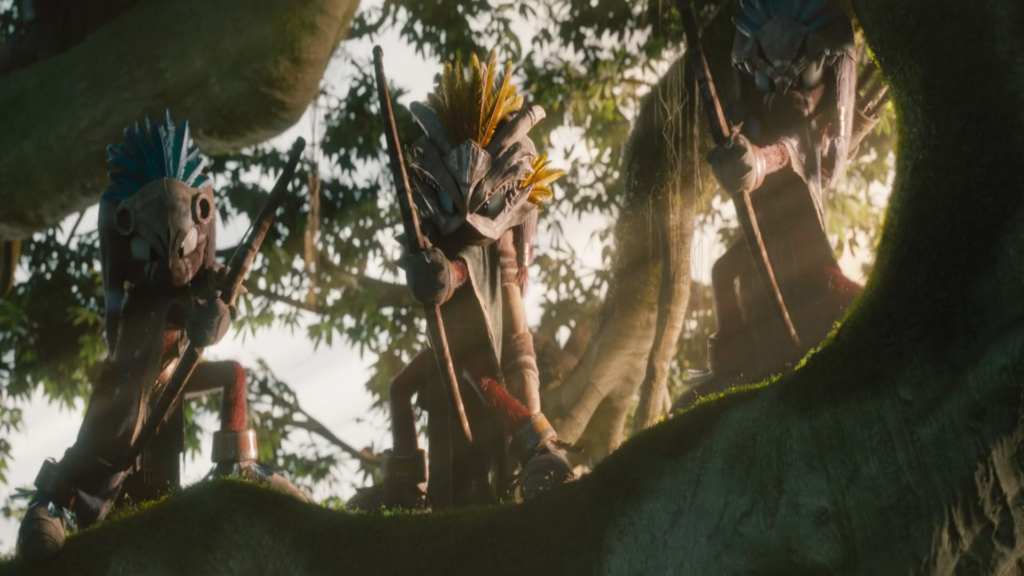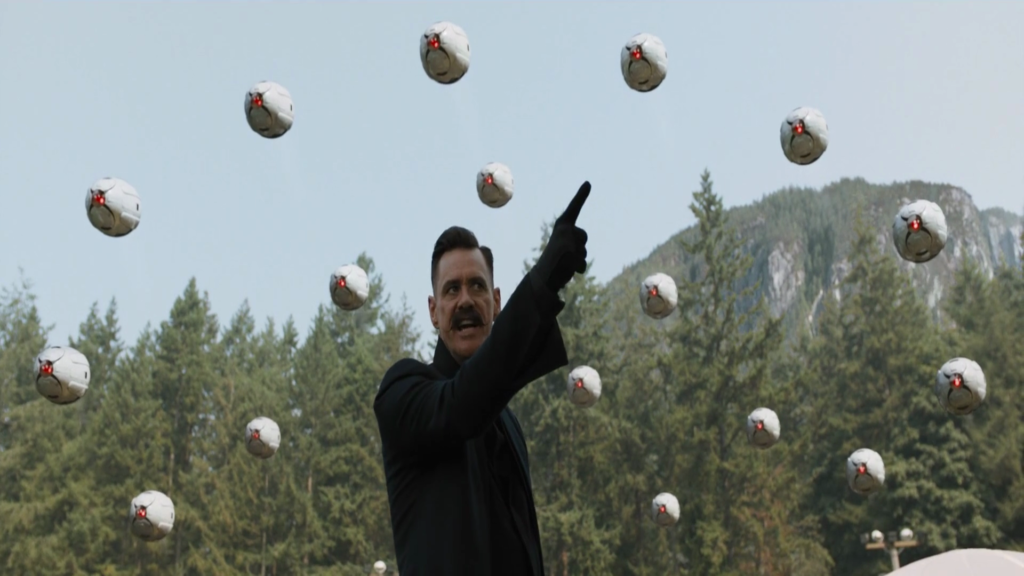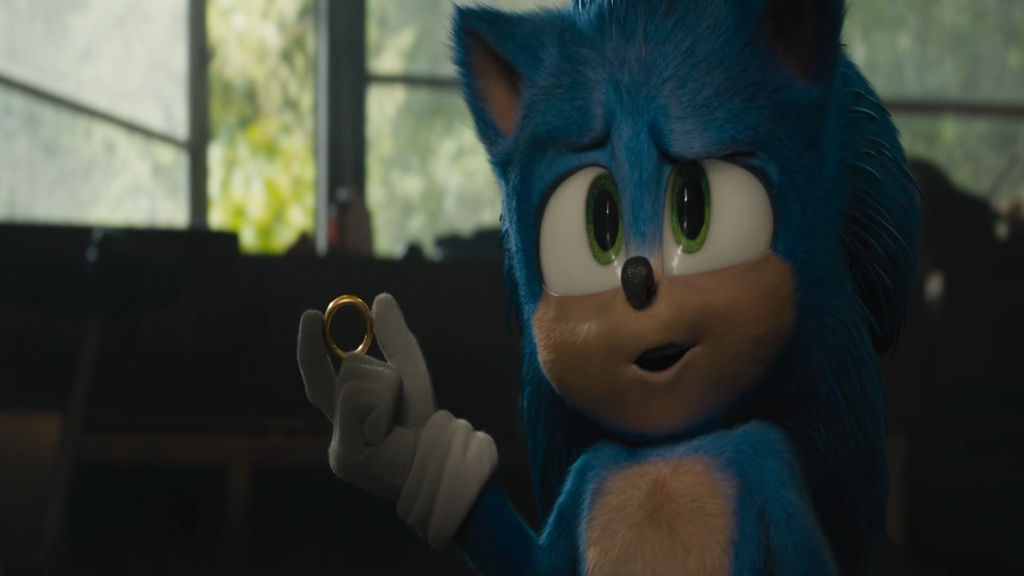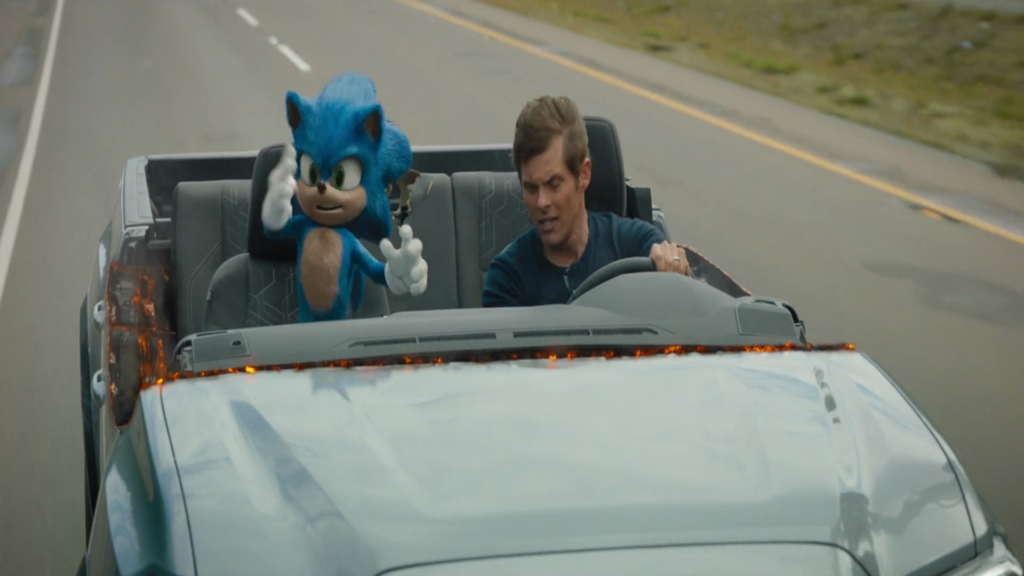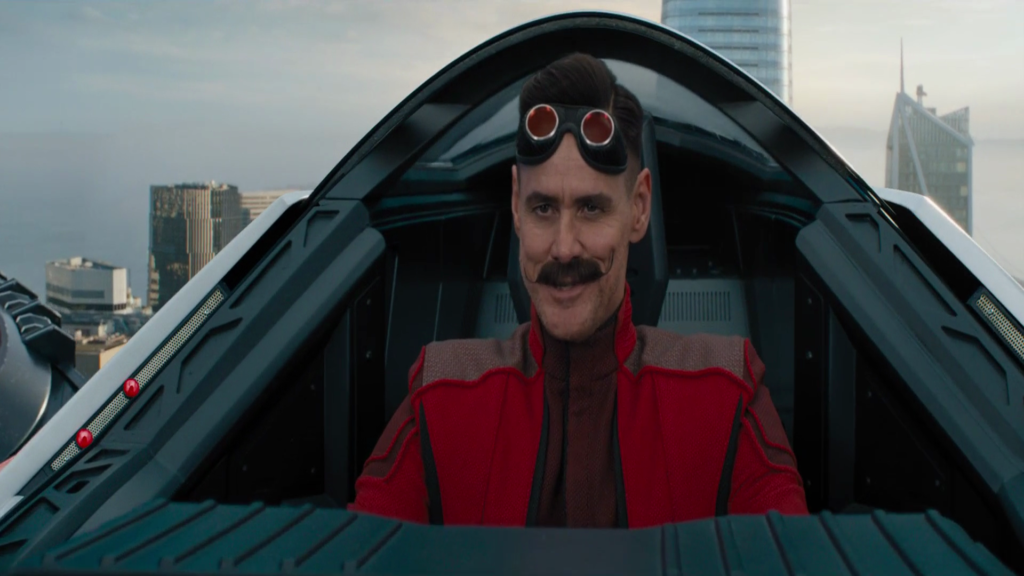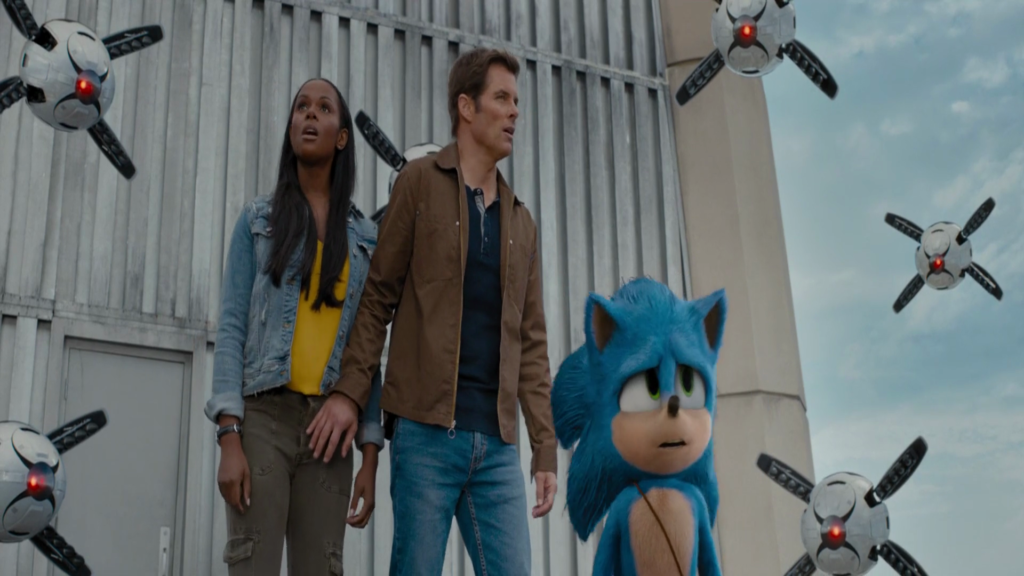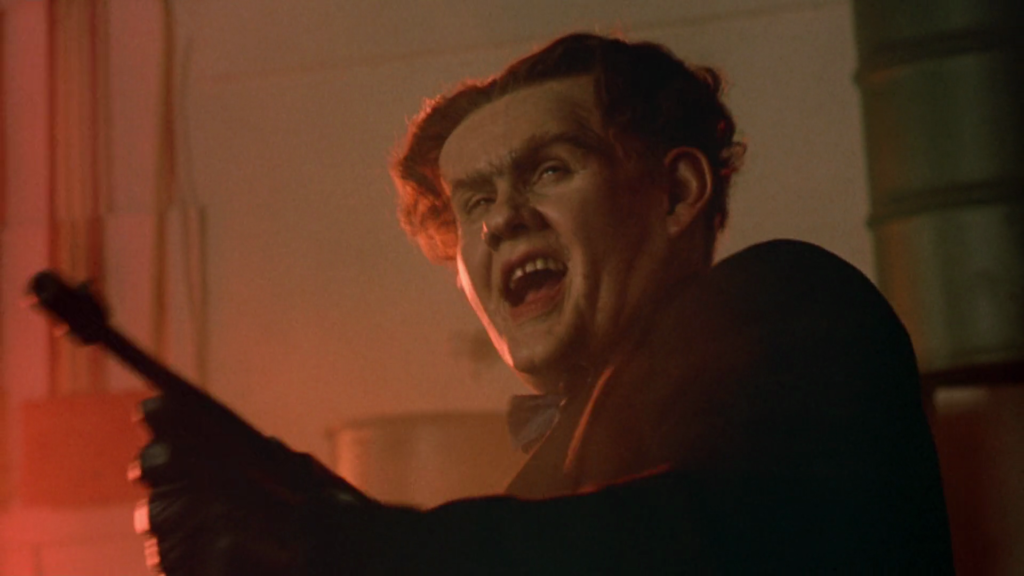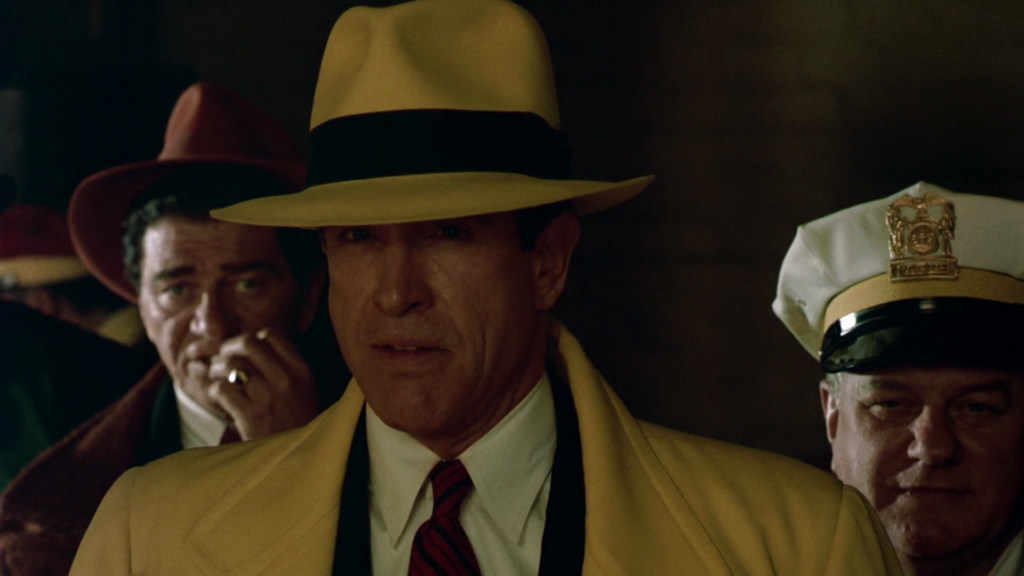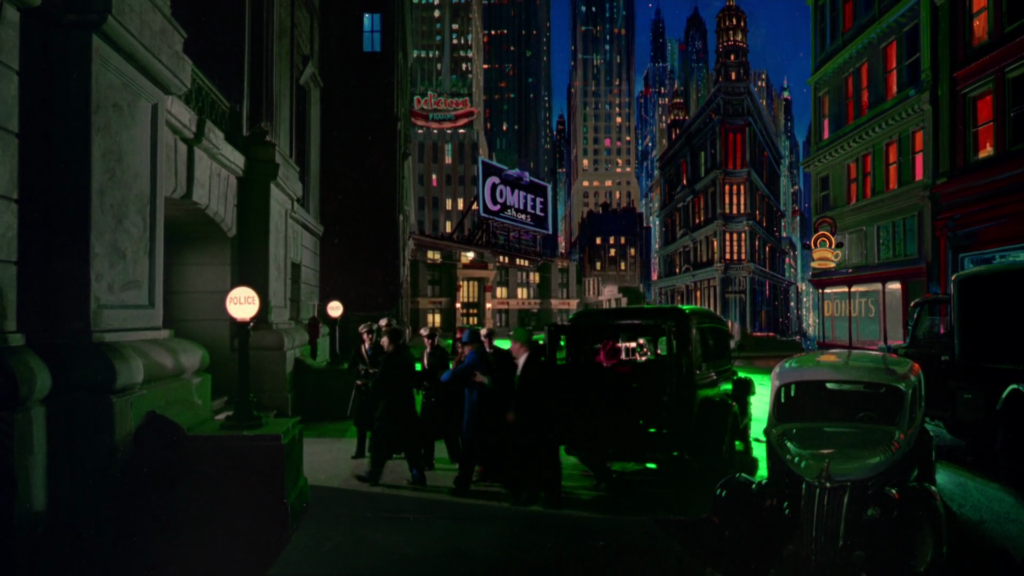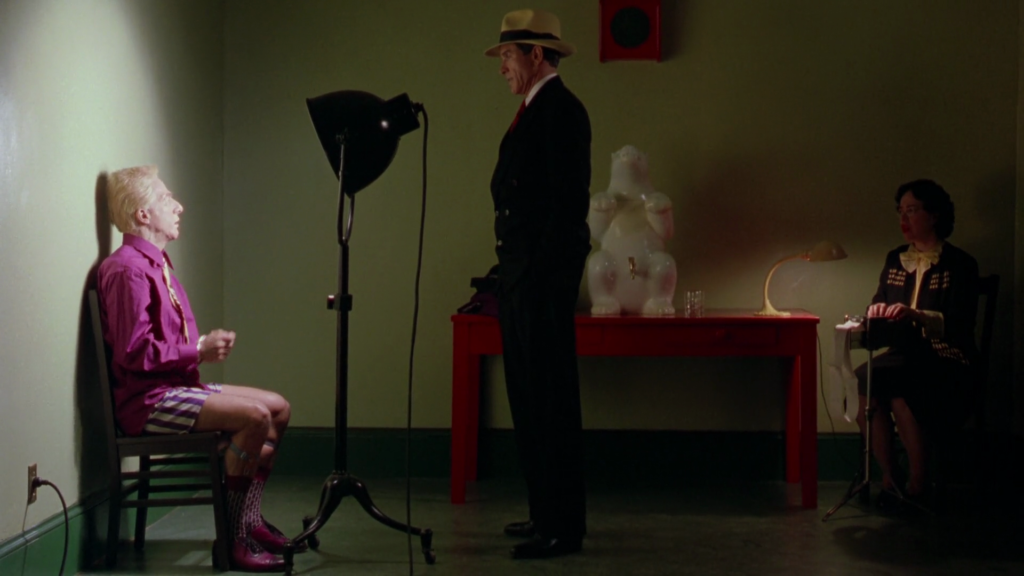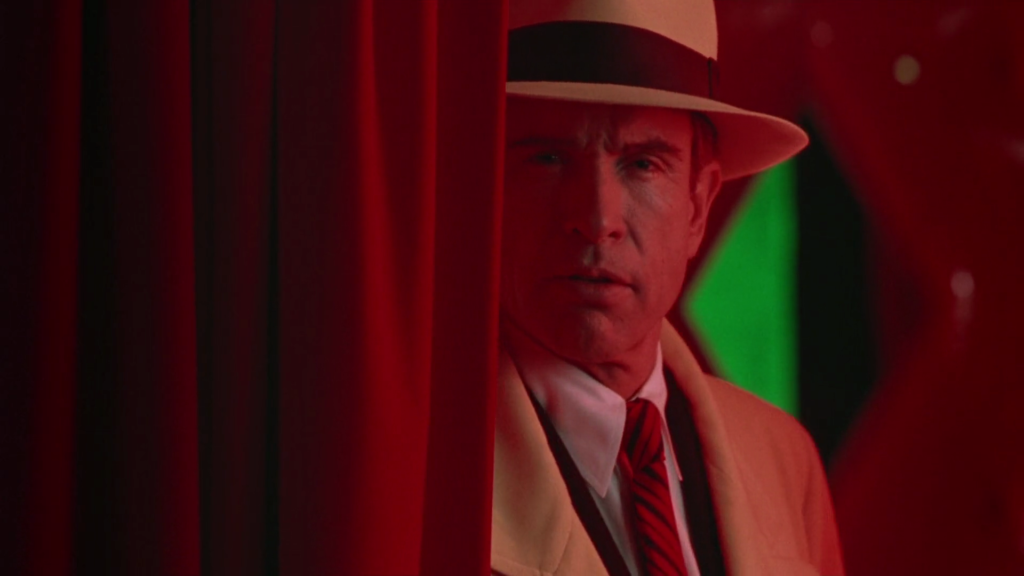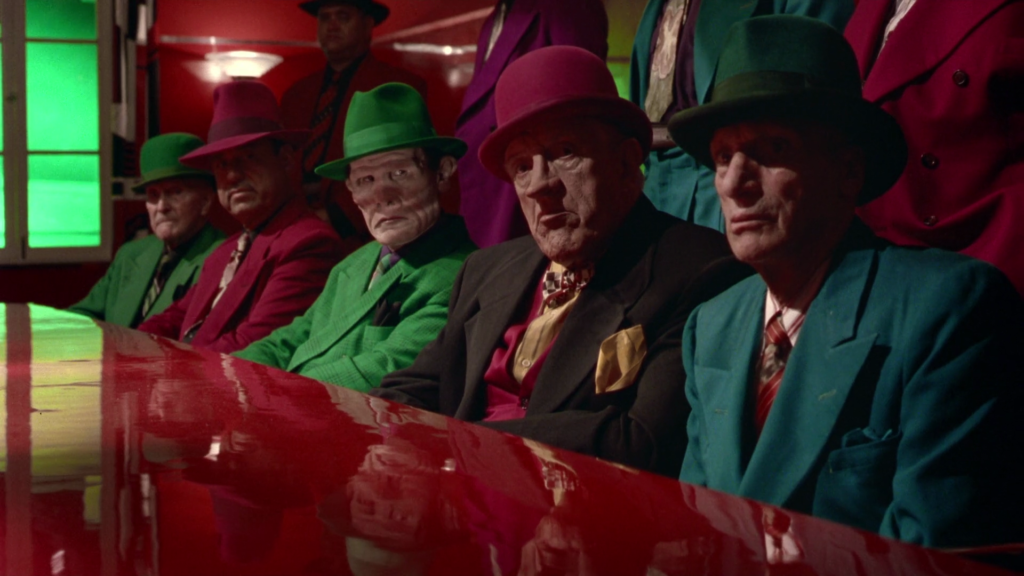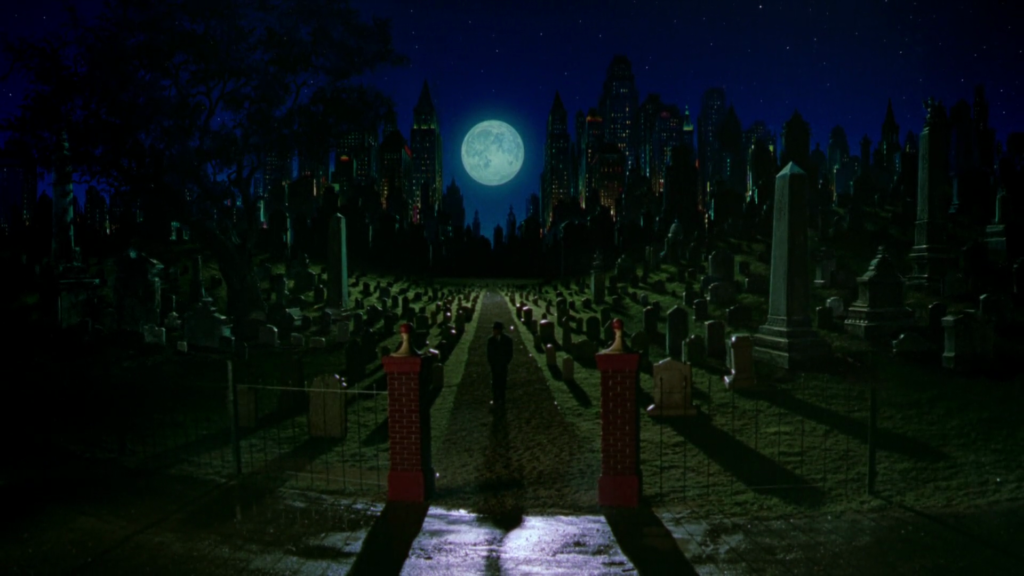-
#408 – Jack Armstrong (1947)
Jack Armstrong (1947)
Film review #408
Director: Wallace Fox
SYNOPSIS: When a valuable shipment and scientist Vic Hardy are kidnapped, young Jack Armstrong along with his friend Billie, his Sister Betty, and their Uncle Jim Fairfield, all attempt to find and rescue him. They eventually track him to an island in the Pacific, where an evil scientist has hidden Hardy away in a secret laboratory where he is building a weapon that could enslave the world. Jack and his friends must deal with the native islanders and the scientist’s henchman before the weapon is completed and the world is at their mercy…
THOUGHTS/ANALYSIS: Jack Armstrong is a 1947 movie serial based on the radio play of the same name.The serial opens up with young Jack Armstrong and his friend Billie along with his sister Bettie working on a car at the Fairfield aviation company, which Billie and Bettie’s Uncle Jim owns. Almost as soon as the serial starts, a hit and run takes place outside the Fairfield office, so Jack and Billie jump in their car and give chase. This car of theirs is a huge beast that just looks like a big steel box put over a normal car. Nevertheless, it gives the opportunity for the serial to open on an action-based note, and to entice viewers to stay and come back for the rest of the serial’s chapters. After Jack and Billie catch the driver, their car is never seen or mentioned again, which is a bit naughty opening with it and thus giving the impression you will see more of it in the next chapters.
One of Jim’s employees, Hardy, is monitoring some strange signals in the ionosphere. One of Jim’s customers named Pearce overhears this, who is working for the gang making those signals for some evil scheme, and has Hardy kidnapped so he can be forced to help with their plan. Jack and the gang track Hardy down to an island in the Pacific Ocean, which they travel to, but their plane is shot down on approach. The rest of the serial takes place on the island, where they meet the owner of a trading outpost named Grood, who is secretly the mastermind of the evil scheme to rule the world through building a weapon and deploying it in the atmosphere. The story involves Jack and the gang dealing with Grood’s henchman, as well as the native tribes that inhabit the island, and later on Pearce when he shows up on the island still pretending to be our heroes friends.
-
#407 – The End of the World (1916)
The End of the World (1916)
Film review #407
Director: August Blom
SYNOPSIS: When it is discovered that a comet is due to pass by Earth, panic and uncertainty over whether the comet will actually strike the planet. Stoll, a stock broker, sees an opportunity to make some easy money preying on people’s fears, but when the danger becomes too real, he and his wife must return to the small mining town which she fled in order to marry Stoll…
THOUGHTS/ANALYSIS: The End of the World (Verdens Undergang, also sometimes titled The Flaming Sword) is a 1916 Danish science-fiction film. The film starts off with the inhabitants of a small mining town visited by the mine’s owner, Stoll. When Stoll meets Dina, the daughter of the mine foreman at a dance, he suggests that she run away with him back to the city. Following a chastising from her Father about being a “harlot” for staying out late on her own (such as it was in 1916 I guess), Dina decides to run away with Stoll, leaving behind her Sister, Father and her friend Flint, who had hopes of marrying her himself. Fast forward a few years and we see that Stoll is a successful financier whose stock market dealings have left him very rich, and his now wife Dina has everything she could ideally want. The beginning of the film really takes some time to establish the characters and their relations. Stoll is the focal point of much of the film, and while he is marked as the villain throughout much of what is going on, he is still portrayed as having some humanity in his faithfulness and dedication to his wife. Ultimately, his manipulation of the stock market and his treatment of the mine’s workers leave him as very much an enemy to many of the other characters. Being perhaps one of the first disaster movies ever, it does the job of portraying how the end of the world impacts a number of different people from different walks of life.
When Professor Wisemann sees a new comet through his telescope coming towards Earth, the discovery generates a lot of uncertainty and panic across the world, as no one seems to know if the comet will hit the Earth or not. Stoll learns from his brother that the comet will probably hit the Earth in northwest Europe and cause significant devastation, and devises a scheme to buy a large number of stocks while there is panic, and have his friend at a newspaper print the (false headline) that the comet will not hit, leading Stoll to sell his stocks at a higher price and become even more wealthy. Even when Stoll learns of the comet’s impact, he insists the newspaper print the misleading story that it will pass by Earth so he can fulfil his scheme. Again, Stoll is made out to be the villain because profiteering over the end of the world is hardly going to go down well is it? Meanwhile, events in the mining town are moving along as Dina’s sister says farewell to her sweetheart Reymers, who has just graduated as a sailor and is leaving on board a ship.
In the third act, with the comet looming ever closer to Earth, Stoll realises the only place he can take shelter is the mine in the town where he met Dina: however, the populace are less than happy at Stoll over the way he has treated their town, and when they learn he is coming to town, Flint organises an attack on Stoll. Dina is also reluctant to return to the town, but is finally convinced. As the comet gets closer, Stoll organises a party for the end of the world, while the workers decide they are going to storm the party, setting the conflict for the final part of the film. As the comet enters the atmosphere, fragments start to rain down over the town causing mass destruction. The special effects are quite remarkable for their time, even if they’re typically just sparks flying over model buildings. Also the image of a comet overlaid into the sky of some scenes gives a feeling of impending doom. The film enjoyed a fair amount of success when it was released; in part capitalising on the fear and uncertainty surrounding Halley’s comet passing Earth a few years before, and the ongoing war in Europe which alerted people to a level of destruction they had never considered before. The film’s showing of mass destruction from meteors, houses being shaken and destroyed, and huge tidal waves gives a fair variety to the devastation and gives the feeling that nowhere is safe in these situations.
The film ends with most of the characters dying: Stoll and his wife are killed in the mine they are hiding in, Flint chases them, but the release of deadly gas kills him too. Dina’s Father passes away, and at the end we see Edith, Dina’s sister alone as she has miraculously survived. She goes up to the top of the church and rings the bell in the hope of alerting other survivors. Coincidentally, it turns out Reymers has managed to return to shore from the ship he was on, and on hearing the bell, the two are reunited to end the film on a somewhat happy note, that even through all the destruction, a sliver of hope has survived. Overall, The End of the World is a well-written spectacle that offers effects and a speculative scenario that film-goers would probably have not seen before. It’s relevance to the time is clear in regards to the amount of destruction the world was experiencing through war. The film does a good job of establishing a variety of characters and connecting them to each other, as we see how the disaster will affect people of different class and occupation, which has become one of the foundations for disaster movies. The spectacle would have engrossed movie-goers of the time, but there’s enough substance in the characters to appreciate the story underneath the spectacle too.
-
#406 – Officer 444 (1926)
Officer 444 (1926)
Film review #406
Director: Francis Ford
SYNOPSIS: When a new miracle chemical called “Haverlyite” is discovered by Professor Haverly, he intends it for the good of humanity. When he is killed by the criminal known only as “The Frog,” who wants the chemical for his own evil ends, Officer 444 of the flying squadron must stop The Frog and find Haverly’s son: the only other person who knows the secret formula for Haverlyite…
THOUGHTS/ANALYSIS: Officer 444 is a 1925 silent movie serial comprised of ten chapters. In the opening chapter, we see a building on fire, as the police and firefighters rush to get the situation under control. Officer 444, a member of the flying squadron revered by the community, heads into the burning building to rescue people trapped inside, and also to apprehend some dangerous criminals within. As is typical with these serials, the first chapter opens up with an ambitious scene involving lots of people and action in order to entice people in to coming back to the theatre for succeeding chapters, and doesn’t particularly tie in to the rest of the story. The plot itself centres around the discovery of a miracle chemical called Haverlyite, named after its discoverer Professor Haverly. The criminal known only as “The Frog” wants the formula for his own purposes, but when Haverly is killed, the secret formula dies with him…until that is, Haverly’s son appears on the scene. However he has lost his memory of the formula following his attempted abduction and his Father’s death, and so Officer 444 and The Frog do battle over young Haverly as Officer 44 tries to chase him down through the various chapters. The plot is easy enough to follow, and while nothing too special, is kept entertaining with a balance of action and investigation. The miracle formula of Haverlyite is left rather vague as to its applications: it has the power to heal people, but also to be a weapon of some form that The Frog wants to use to take over the world. The vagueness is, I think, part of the message of the film that any scientific discovery may be used for either good or evil, as evidenced by the foreword at the beginning of each chapter.
The cast of characters is fairly large, and adds some variety to proceedings: Officer 444 is the typical lead, and nurse Gloria Grey provides the typical female role, although I suppose it is a bit more involved than the glorified secretarial role most female roles have in these serials, as her nursing profession gives her purpose in scenes such as where she is working to restore young Haverly’s memories. Patrick Casey is Officer 444′s sidekick in the police force, and helps out with the more physical scenes. As you might be able to tell from the name, he fits the stereotypical Irish policeman role, but it will be a long time before cinema moved away from stereotypes. The Frog is presented as a clever criminal who disguises himself as a disfigured man. He sends a woman known only as “The Vulture” to stop 444 and interrupt his plans. While it is rare to find a second woman in a serial such as this, she does fit the role of an ambitious or clever woman that is always on the side of the villains, a role also seen in The Power God released a year earlier with the main villain’s wife. One of the more noteworthy characters is the chief of police played by August Vollmer, who was an actual police chief and one of the most influential in defining policing in the U.S. for better or worse. Dr. Blakely is a mysterious doctor whose purpose and identity provide an ongoing mystery that is only resolved in the final scenes, again providing incentive to get viewers coming back each week.
The serial does a good job of balancing the action and investigation scenes. There’s plenty of car chases filmed ambitiously, and some daring stunts such as a train switching tracks at the last second to avoid Officer 444. The fist fights aren’t as well executed, but it wasn’t until a few years later that fight choreography seemed to be more considered on film. Of particular note on the investigative side is the use of a polygraph or lie detector machine (called a “lieing machine” in the serial). This would have been a fairly recent invention and is probably the first time the device was featured on film. I wonder if Vollmer’s involvement allowed them to get their hands on one, since he would have been using them in his own police force at the time I suppose…
Overall, Officer 444 is a fairly standard serial, but at the time it garnered quite a lot of popularity from what I can tell. It’s story is easy enough to follow, but has a decent sized and varied cast who play a clear role in events. The action scenes showcase car chases and fights that are imaginatively and dramatically shot to emphasise the heroics of the heroes, and there’s enough mystery surrounding certain characters to keep viewers coming back. It’s not too noteworthy from a historical perspective, but it gives a somewhat interesting look at policing in the 1920′s if that interests you.
-
#405 – Scoob! (2020)
Scoob! (2020)
Film review #405
Director: Tony Cervone
SYNOPSIS: While Mystery inc. are looking for ways to expand their brand, Scooby-Doo and Shaggy are abducted by the super hero the Blue Falcon (or, more accurately, his son Brian). The Blue Falcon and his partners Dino-mutt and Deedee Skyes believe that Scooby-Doo is important to the evil schemes of Dick Dastardly, who is collecting the three skulls of Cerberus for some undoubtedly nefarious scheme. Meanwhile, Fred, Daphne and Velma are trying to catch up with Scooby and Shaggy in order to rescue their friends and unravel the mystery…
THOUGHTS/ANALYSIS: Scoob! is a 2020 animated film in the Scooby-Doo! franchise. Scooby-Doo is quite an odd entity: It’s a very simple show that has never been revolutionary or even had anything particularly unique. However, for some reason, it has been continuously in circulation through TV shows, reruns, and movies, for over fifty years. It’s staying power is truly unmatched for reasons we may never comprehend. It’s not to say that Scooby-Doo doesn’t deserve its status as a cultural keystone, but it’s unassuming, simple premise has rarely been altered over those fifty years, and people can still watch it and instantly recognise the characters. Maybe it’s that consistency that keeps it in circulation, and that you always get what you expect isn’t necessarily a bad thing when you’re not trying to be anything else.
So Scoob! itself starts with the origin story of Shaggy meeting Scooby-Doo. It doesn’t offer any real surprises, and I think it’s one of those origin stories that doesn’t really need to be told. Nevertheless, it sets up the theme of Scooby and Shaggy’s friendship that is the backbone of the film’s story. In the next scene we see young Shaggy and Scooby becoming friends with young Fred, Daphne and Velma, as they sole their first ‘mystery’ together. Again, the origin story doesn’t hurt, but I still wonder whether we need the origin told. The TV series A Pup named Scooby-Doo! showed the gang as kids, and I think that was enough, but at least the film doesn’t contradict that (that I know of), and obviously not everyone will be familiar with the characters, so it’s a decent way of introducing them. We then get a scene that faithfully recreates the original TV opening, with the gang being chased by all manner of monsters and ghosts. It’s a nice touch that will please fans of the franchise, and throughout the film there’s a fair amount of more minor references that fans will enjoy spotting.
Cut to the present, and the gang are sitting in a diner discussing ways to expand their business….and this where the film starts it’s slide downhill. They meet Simon Cowell (yes, voiced by him), who says that Shaggy and Scooby are holding the team back because they don’t really contribute anything. At this point, the joke about Simon Cowell judging people in a straight and harsh manner has been done and done again. I can’t really fathom why it’s in this film, other than maybe younger viewers haven’t seen it before (would they really recognise Simon Cowell though?). I get the need to have the ‘breakup’ between Scooby and Shaggy with the rest of the gang as it serves the premise of the rest of the film, but using Simon Cowell to do it just seems bizarre and distracting). There’s a lot of humour in this film that feels outdated; using jokes that have been done plenty of times before. However I think the main problem with this is that Scooby-Doo should have a timeless quality to it, which I think has formed part of its success by maintaining its universal appeal and sticking to its consistency rather than adding in current trends or trying to update the characters. Remember Scrappy-Doo? The only time they tried to change the dynamic of the franchise and how it’s been almost entirely erased from its history due to how poorly it was received and reflected on? That’s why trying to make the Scooby franchise be “relevant” is going to be detrimental to itself, and jokes about Netflix and Tinder again just aren’t funny or original. That said, there are a decent amount of funny moments that will make you laugh, but they are definitely the classic slapstick, goofy antics that you would expect from the franchise.
The film’s plot overall I think has a decent enough pacing. There’s a certain momentum in how the story develops, and it never slows down so younger viewers won’t lose interest. However, there is a lot going on, and a lot of characters that are thrown into the mix. The biggest problem in this regard is that it barely seems like a Scooby-Doo! movie at points: there’s no real mystery for the gang to unravel, and most of the story centres around The Blue Falcon stopping Dick Dastardly from unlocking the gates of the underworld. Daphne, Fred and Velma are absent from large chunks of the film, and there’s a loss of focus on the core characters at points. Dick Dastardly as the villain being concerned about his dog Muttley is a surprising mirror to Shaggy and Scooby, and I thought that in particular was interesting and could have been developed further. The film obviously isn’t trying to be a standalone Scooby-Doo! film, but to set up a “Hanna-Barbera” cinematic universe in some form. Characters like Blue Falcon, Captain Caveman and Dick Dastardly all have an appearance, but for such a big and iconic franchise as Scooby-Doo, it deserves it’s own dedicated film without worrying about an expanded universe. This also needs to another problem: that the film veers right into Marvel’s Avengers territory, and makes it a superhero film about saving the world. After ten years of the Marvel cinematic universe, I don’t think offering almost the same superhero crossover theme with less-known characters and properties is going to work. The Avengers franchise is not going to be topped anytime soon, and superhero fatigue is going to set in, rendering what is set up in Scoob! as ultimately a cheap imitation that maybe kids can like to get their fill with, but it is trying to carve a space in a genre that is saturated, and ultimately doesn’t need to be in. Don’t get me wrong: I think a Hanna-Barbera cinematic universe could work; they have a huge list of recognisable characters that could bring something to the table, but to layer all of that in a Scooby-Doo movie that already has enough content to work with ultimately dilutes the uniqueness of the characters. Going forward, I think there’s potential in maybe something in the style of the “wacky races” Hanna-Barbera cartoon (hinted at in the credits sequence) could be insanely fun in the style of a road trip with all the different characters teaming up or facing up against one another, but just another superhero cinematic universe? I don’t think it will work.
The 3D animation is something that Scooby-Doo hasn’t really ventured into, and for the most part it is fine. Scooby is well animated, and while the rest of mystery inc. aren’t quite up to par, they still move fluidly. Characters like Dick Dastardly are very expressive with their cartoon face pulling and gestures, and they really work. The problem emerges with the more ‘normal’ human characters, like Fred, Daphne, Velma, Deedee etc. in that they just can’t pull off the expressive range that the more cartoon-esque characters like Dastardly can, making them feel a little bit lifeless in comparison. Simon Cowell for example looks as ‘life-like’ as they could make him and he looks severely out of place. The voices are an area of huge controversy, as the usual voices for the Scooby-Doo characters were replaced for this film by celebrity actors apart from the voice of Frank Welker, who voices Scooby. To go back to the role of consistency in Scooby-Doo, the voice cast has been extremely consistent over fifty years, with voices only changing when an actor retires, and then their replacements are extremely close to the originals, or even chosen by them. While Frank Welker now voices Scooby, he has also voiced Fred since the very first episode for over fifty years until this film. Ditching the regular voices for actors with celebrity ‘appeal’ is a major mistake in this film. The voices of the characters are iconic, and there was no need to change them. Shaggy’s voice is a bit dreary from time to time, Daphne’s voice lacks the right tone (it’s a bit too peppy), and Velma’s is excessively dreary and makes her sound a bit too dismissive of other people’s opinions when she is conversing with them. Zac Efron voicing Fred did a better job then I was expecting, but it was a rather lifeless performance again at times, and since Welker voiced Scooby-Doo, there was no reason he could not have voiced Fred.
Overall, while Scoob! has good pacing and energy with some funny moments, it misses the mark on being a worthwhile continuation of the Scooby-Doo franchise. Combined with attempting to set up a cinematic universe with a large cast of varied characters, the film misses the simplicity and consistency of the franchise of a group of teenagers solving mysteries, chasing ghosts and some slapstick comedy from Scooby and Shaggy. The film simply tries to do too much, and neglects characters such as Fred, Daphne and Velma. The humour is hit and miss, and is best when it can surprise you, but more often than not it plays it safe and cracks a joke that has been done in plenty of films before. I think the film could have worked better if it didn’t need to simulate a ‘breakup’ between Scooby and Shaggy and the rest of Mystery inc., and focused more on the mirroring between Scooby and Shaggy and Dastardly and Muttley, framing it as more of a traditional mystery than a superhero ‘save the world’ adventure.
If you are interested in the Scooby-Doo! franchise, I say check out the Scooby-Doo! Mystery Incorporated series which is by far the best implementation of the franchise and characters by keeping the typical mystery and detective work, but also expanding on it into a larger season-wide story arc that expands the lore in exciting directions.
-
#404 – The Power God (1925)
The Power God (1925)
Film review #404
Directors: Francis Ford, Ben F. Wilson
SYNOPSIS: Professor Sturgess, with his assistant Jim Thorpe, has invented a machine that can draw infinite power from the air, which will be sure to revolutionise the way energy is produced. However, this invention has drawn the attention of the coal and oil companies, who have agreed that the invention is a threat to their monopolies, and must be destroyed. They hire career criminal Weston Dore to deal with Sturgess, but Dore has other plans to steal the invention for himself and become the new “power God”…
THOUGHTS/ANALYSIS: The Power God is a 1925 movie serial comprised of fifteen chapters, and one of the few serials that has sadly survived from that time. The story opens up with Professor Sturgess and his assistant Jim Thorpe finishing development on a machine described as “the marvel of the radio-electric age,” which can draw power directly from the air, providing a nearly infinite source of energy. This machine has drawn unwanted attention from the traditional energy businesses, who fear the collapse of their industry, hire criminal Weston Dore to get a hold of the machine by any means necessary. When Dore tries to buy the machine from Sturgess with the aim of suppressing it, Sturgess refuses. Dore then has to change plan and has Sturgess killed. With enemies closing in, Thorpe and Strugess’ daughter Aileen have to hide the machine and protect the invention from falling into Dore’s hands, who decides to try and keep the invention for himself to become the new “power God” of the modern world. The story has a familiar setup as with most serials, but this is one of the serials that defined the format for twenty years, and provided a ready-made template for companies like Republic and Universal to pump out similar serials in around a month or so.
At the time it was released, The Power God would have been something many people had not seen before, particularly in the science-fiction genre. Compared to those other serials, The Power God is a strong example of the potential of the format’s storytelling potential. Following Jim asking Professor Sturgess’ approval to marry Aileen and being refused, the two decide to elope and marry in secret. However, a car accident involving her and Dore in another car leads to her losing her memory, and when their rescuers believe Dore to be Aileen’s wife due to the wedding ring they found (which was for Jim), Dore capitalises on this for his schemes and tries to convince Aileen she is his wife while her memory is gone. This is quite a complex situation, and takes up the first few episodes as Jim tries to rescue Aileen and stop her from signing over her Father’s estate to Dore, as well as trying to get her to recover her memory. There’s definitely plenty going on in this story, and each chapter feels a bit different and pushes the story forward, instead of other serials where each chapter is just the foiling of another scheme, a fist fight, and a cliffhanger. The Power God goes through a number of plans and schemes, fleshing them out in depth, and advancing the story in a structured way, as well as introducing new characters that add something new along the way.
The characters themselves are the typical cast of serials: you have the broad-shouldered white male for the lead who does most of the action, a female secondary character who gets captured a lot, a scientist, a criminal villain…they’re all here in some capacity. However, the characters are given plenty of development to make them feel unique. Dore is intent on getting the machine for himself, and his interactions with his calculating wife Carrie give him a bit more of a human dimension. We are also introduced to Carrie’s brother later on, who again changes up the dynamic and keeps things interesting. A mysterious man who aids Thorpe and Aileen from time to time without explaining his motives adds an element of intrigue as to what his role is. He is often just called “the Hindu,” which I’m sure would have been appropriate for the time. He at least is not played by a white actor in ‘blackface,’ but his actor, a native American, does seem to have a bit of makeup on to darken his skin. There are also two black men who are characterised as ‘simple minded,’ which is sadly how every black person on film was depicted in this time. These are certainly problematic, and a product of their time.
The serial is well produced and shot, with plenty of consideration into camera angles and scene-setting. Some of the action scenes, such as on the train near the end, would no doubt taken some effort to pull off. The fight scenes are less well done, and they mostly feel like a chaotic scrap. I don’t think choreography for fight scenes had really been established or developed at the time. The most peculiar aspect of the film for me is the ending: after Dore is stopped and the machine recovered, Aileen and Thorpe realise this machine that will revolutionise how energy is produced will have the consequence of putting thousands of people out of work. In realisation of this, they simply decide to destroy the machine to preserve the status quo. This is a bit of an anti-climax since the viewer will have watched this serial for five hours to see them recover the device, only for it to be willingly destroyed. Also it seems to have the message that invention, science and progress should only be allowed as long as they don’t upset the status quo, or put people in poor working conditions out of a job. The messaging that progress and change is bad does not feel natural, it feels forced and tacked onto the end. It is highly reminiscent of early Soviet cinema where such an ending would be stuck on the end to fit certain propaganda and messaging: the hero would realise his foolishness at independent thought, and would heroically take his place in the system. The example that comes to mind is the Russian film Gold in particular. I wonder if this ending was intentionally made to not upset big business, or they could not figure out any other ending. Either way, it’s not a satisfying payoff, and is rather suspect. Overall though, The Power God is a good serial that has plenty of content, as well as twists and turns that keep things fresh and interesting. The characters are well defined and undergo enough development throughout. There’s some problems around its racial characterisations and the questionable ending, but it certainly provides a template for the format as it was used in the years after it until its demise.
-
#403 – Airwolf (1984)
Airwolf (1984)
Film review #403
Director: Donald Bellisario
SYNOPSIS: A military exercise to showcase a new state-of-the-art helicopter codenamed “Airwolf” takes a disturbing turn when its designer and pilot, Dr. Moffet, goes rogue by destroying the testing facility, and taking Airwolf to Libya. The head of a CIA division named “The Firm” travels to the home of Stringfellow Hawke, a recluse who was a test pilot for Airwolf, with an offer of a million dollars to reclaim the helicopter. String is reluctant to do it, but agrees to it on the condition that The Firm find his brother St. John, who went M.I.A. during the Vietnam war seventeen years ago…
THOUGHTS/ANALYSIS: Airwolf is a 1984 TV movie, which also served as the pilot for the Airwolf TV series. In the opening scene, we see a military training exercise showing off the highly-advanced military helicopter codenamed “Airwolf” to a U.S. senator. The whole scene is really just an excuse to get some action scenes with the helicopter in right from the start, and it certainly delivers, as the helicopter flies faster than the speed of sound, outmanoeuvres missiles and just blows a lot of things up, you get the action you would expect and a good idea of what Airwolf can do right from the outset, and should get viewers hooked right away, with the technical jargon being spliced in with the action which illustrates quite clearly what they’re talking about. At the end of the exercise, the pilot Dr. Moffet, who is also the designer of Airwolf, attacks the testing facility and escapes with Airwolf along with the two co-pilots. The themes of the story are rooted in cold-war military operations and espionage, and as such has a dark tone throughout, amplified by the use of strong language and high body count that gives it much more of a serious feel than contemporary vehicle-based shows such as Knight Rider.
Archangel, The head of an intelligence agency only known as “The Firm,” visits the home of recluse Stringfellow Hawke (yes that is his real name, and yes it is the best name ever), who was a test pilot for Airwolf. Archangel attempts to recruit Hawke for a mission to steal Airwolf back from Moffet, who has joined up with Kaddafi’s forces in Libya. Hawke is reluctant to do so, but agrees to it on the condition that The Firm finds his brother St. John (does anyone in this family have a normal name?), who went missing in Vietnam on a military operation seventeen years ago, where Stringfellow made it out, but his brother did not. A lot of the film focuses on establishing Stringfellow’s character as a solitary, cultured man of few words, but who can also spring into action when necessary. His story is one of loss, not only of his brother, but also their parents who died when he was ten, and also his girlfriend in a car crash. This is played out as Archangel’s assistant Gabriela tries to get close to Hawke, but his coldness to her is a reminder that anyone who gets too close to him dies. Hawke’s character really drives a lot of the scenes, but there’s also action sequences interspersed within them as Moffet is piloting Airwolf to attack a variety of French and American forces, so it keeps giving some more action-oriented scenes to balance out the character development. Backing Hawke up is his friend Dominic Santini, who raised Stringfellow and his brother after their parents died. Dom plays a bit more of a comic relief role, but still a capable ally, and one that doesn’t upset the dark tone that the film goes for.
We don’t get to see Stringfellow in Airwolf until the finale, but as mentioned there’s plenty of action scenes with Moffet as the pilot so you can get a good sense of what Airwolf can do (also good for a TV pilot in that it shows Airwolf in a variety of situations that could be employed over the series). A real helicopter is used for the flight scenes, and the stunts and choreography are all well done, as well as the interior of Airwolf being full of flashy (for the time) gadgets and screens. Moffet himself is clearly unhinged, and though it is never explained why he has gone rogue other than implying something that happened with a project that the Senator at the beginning was involved with, Moffet’s real motivation seems to simply be boredom and enjoys taking risks and blowing people up some light entertainment. Overall, Airwolf has a good mix of action, intrigue and espionage combined with some good character development that is balanced between the different personalities of the characters. The dark tone pushes some boundaries, and gives the story a decent intensity that allows viewers to remain engaged throughout the different elements of the plot. The ending is left rather open, but as a pilot for the TV series, it is meant to be picked up there (and it is). As a stand-alone film though, it is still likeable and entertaining enough to sit through.
-
#402 – The Monster and the Ape (1945)
The Monster and the Ape (1945)
Film review #402
Director: Howard Bretherton
SYNOPSIS: Professor Arnold at the Bainbridge Research Laboratory have completed construction on a revolutionary new robot called the “Metalogen Man” that they believe will be able to accomplish all manual labour. However, after a demonstration to Professor Ernst and three other colleagues, Ernst arranges the deaths of the other three and steals the robot for himself using a trained ape. Ken Morgan, a representative for the company who ordered the robot, teams up with Professor Arnold and his daughter Babs to stop Ernst and recover the robot, before Ernst can find more of the valuable mineral Metalogen and create an army of unstoppable robots…
THOUGHTS/ANALYSIS: The Monster and the Ape is a 1945 movie serial composed of fifteen chapters. The opening chapter sees Professor Arnold give a demonstration at the Bainbridge research Laboratory to Professor Ernst and three other colleagues of “The Metalogen Man”, a human-like robot that will be able to handle all kinds of manual labour. After the demonstration, Professor Ernst arranges the deaths of his colleagues and steals the robot for himself using a giant trained ape named Thor. Ken Morgan, the representative of the company who was going to buy the robot, arrives but finding the robot has been stolen, teams up with Professor Arnold and his daughter Babs to attempt to recover the robot. The story follows Morgan, Arnold and Babs as they try to thwart Ernst’s various schemes to unearth more of the valuable mineral Metalogen to create more robots. The story follows the usual serial format rules, with a lot of back-and-forth between the heroes and villains as the robot and it’s control unit are stolen and re-stolen throughout the fifteen chapters. There are less action scenes and very few chase scenes in vehicles which are typically a staple of the format. The cliffhangers are fairly varied and contain some elaborate traps, but you know how they’re going to end up most of the time.
The “monster” and the “ape” of the title are the robot and Thor. The robot is controlled by a control unit and looks fairly strong and menacing, with its light up eyes and bulky body. Thor is brought out of the zoo by its trainer to carry out the orders of Professor Ernst, and handles jobs such as carrying the robot, which is too heavy for any person to lift. Thor himself is played by Hollywood stuntman Ray Corrigan, who owned the ape-suit and would rent himself and the suit out to movies that required it, and he does a convincing job with it. However, we don’t see nearly enough of the two of them, and most of the action doesn’t involve them. The worst part is we never get to see the two of them fight one another, which is a hugely missed opportunity (and being shown on the posters). Thor dies by being shot in the thirteenth chapter, which is a hugely underwhelming end for the titular character. The rest of the characters follow the usual format, with the lead male doing the action and fight scenes, the sole female character who acts as an assistant or secretary, and the ‘good’ scientist who helps them. There’s also Flash, who plays a comic relief character (I’m not sure what his role in the laboratory actually is), and is played by a non-white actor, which is very rare in 1945. He is played as having a low intelligence and being a coward, which results in him being very much a racist caricature, and is quite problematic to say the least. Professor Ernst as the villain has plenty of schemes, and while he has no special powers, inventions, nor is he hidden behind a disguise like many serial villains, he still has quite an aura of menace about him.
Overall, The Monster and the Ape is a typical serial adventure with few stand outs. It has some elaborate cliffhangers and scenarios that replace the well-worn vehicle chases of other serials, but it’s titular “monsters” are vastly under-utilised, and you can’t help feel a little disappointed with the potential of a robot versus an ape, and what we actually get, which is the sparse use of both and the lack of any confrontation between them.
-
#401 – Sonic the Hedgehog (1996)
Sonic the Hedgehog (1996)
Film review #401
Director: Kazunori Ikegami
SYNOPSIS: Sonic the Hedgehog is visited with an urgent message from the President of Planet Freedom. When he goes to visit him, Sonic finds none other than his arch nemesis Dr. Robotnik, who actually wants Sonic’s help in destroying Metal Robotnik, a robot who has taken over the city of Robotropolis, where the generator for the city is about to go critical and endanger the whole planet unless Sonic can go and defeat Metal Robotnik and shut the generator down. Meanwhile, Robotnik has his own schemes at work, including one for a certain “Hyper Metal Sonic”…
THOUGHTS/ANALYSIS: Sonic the Hedgehog is a 1997 animated film made from a two-part Original Video Animation (commonly known as OVA) released in Japan. The story opens up with Sonic and Tails relaxing on a beach when they are visited by an owl who is only referred to as “the old man.” He tells them that the President of Planet Freedom wishes to see them urgently. When they arrive, Sonic and Tails find their nemesis Dr. Robotnik there, who actually wants their help. Robotnik has been forced out of his home of Robotropolis by Metal Robotnik, and the generator in the city will overload and destroy the planet soon if it is not shut down. Sonic and Tails agree to do it, and travel to Robotropolis. The story throws you into the middle of this world with little explanation of what is going on (with the brief exception of the world being divided between an upper world of floating islands, and a lower world of darkness where Robotropolis is). That’s not necessary a problem though, as a blue hedgehog that runs really fast doesn’t need too much of a backstory or exposition to engage the viewer. The characters are recognisable and act more or less how you would expect them too, so you get what you would want in that respect in a movie about the video game character.
Sonic and Tails arrive in the lower world of darkness and encounter Metal Robotnik, and battle takes place in the ruins of what seems to be New York City, suggesting planet Freedom is actually Earth in the distant future. The action is fast-paced and delivers what you’d expect, with lots of running and jumping all over the place. Sonic and Tails are saved by Knuckles, who again is more or less the character you would expect him to be. The second part of the film sees Sonic facing off against “Hyper Metal Sonic,” a robot version of Sonic created by Robotnik. There’s not too much to say about this part of the movie, as it is more or less a straight-up fight between Sonic and Metal Sonic, with the other characters sometimes interjecting. Again, this isn’t so bad in terms of the characters and world themselves don’t need to have a comprehensive story mapped out for you. I think it more or less delivers what it needs to, but since it clocks in at under an hour, it feels like there’s a lot more that could have been done.
As mentioned, this movie was composed of a two-part Japanese animation, and re-edited into a single movie for an English release. The dubbing industry at the time was not particularly great, but the English voices are all pretty terrible. Sonic sounds very nasally, but has a bit of the attitude you would expect him to. Tails sounds awful and always sounds like he has a cold. Robotnik’s voice is fairly decent, and sounds fairly similar to the voice he has in the video games that preceded this movie. The animation as well often feels cheap and fragmentary with a lack of frames making the animation feel rough, which destroys any sense of speed and fluidity that the movie really needs to show off Sonic’s speed. A lot of the expressions of the characters and their style or reactions are those that are typical of Japanese animation, and don’t really translate too well. This is again an issue around the early dubbing industry still finding its feet with how to approach the Japanese animation style.
Overall, Sonic the Hedgehog is a brief foray into the world of the titular character. It doesn’t establish any deep story elements or incorporate any of the stories from the games, but relies on the recognisable characters doing what you would expect them to, and leaves the detail of the world to the imagination. The quality of animation and voices really hampers the feel of the film at points, and the style of animation is awkwardly interpreted at times, but there’s some decent action scenes, and portrays the characters in a way that one would more or less expect.
-
#400 – Sonic the Hedgehog (2020)
Sonic the Hedgehog (2020)
Film review #400
Director: Jeff Fowler
SYNOPSIS: Sonic, a hedgehog who was borne with super speed, is chased from his homeworld, and transports to Earth where he must hide by himself so the same thing does not happen again, and someone else attempts to capture him for his powers. Spending ten years hiding on the outskirts of the rural town of Green Hills, he has grown attached to some of the locals without them knowing of his presence. Police officer Tom Wachowski and his wife Maddie are two people has grown particularly fond of. When an overuse of Sonic’s powers triggers a large scale power outage, the government sends in their specialist Dr. Robotnik to investigate the cause, and finds that Sonic’s speed could be a source of infinite power for his robots, if he can just gets his hands on him…
THOUGHTS/ANALYSIS: Sonic the Hedgehog is a 2020 film based on the popular video game character of the same name. The story opens with some backstory, as Sonic tells us about his home on another planet, which he had to flee because there were those who wanted to capture him for his powers to run incredibly fast. He flees to Earth under the instruction to trust no one. Ten years later, he is living in a hideout in the woods near a rural town called Green Hills. Here, he keeps an eye on the locals, but never shows himself to them. When his powers inadvertently caused a huge power outage and the government tasks scientist Dr. Robotnik with investigating, Sonic has the local sheriff Tom Wachowski help him get to San Francisco to gets his rings back which can transport him to a new world where he will be safe. The film’s story is very straightforward, with it being a typical ‘fish out of water’ plot and Sonic getting used to being around humans. I suppose there’s a bit of a twist with Sonic not trying to find his way home, but to escape his new home, but it doesn’t affect the feeling that the plot is something you’ve seen plenty of times before. Nevertheless, the themes are consistent, and tie up with Tom’s plot of wanting to move away from his home to San Francisco to do some ‘real’ police work there. The focus really isn’t on the story as this primarily aimed at children, and the fast one-liners and light-hearted back-and-forths between characters keep things going at a smooth pace so as to keep attention. In this respect, the film succeeds rather well, even if it fails to create anything innovative or deep in it’s plot. That said, there’s a lot of references to different aspects of the franchise’s history that more devoted fans will appreciate, so the film tries to saddle all audiences along for the ride.
The story primarily serves as an origin story for Sonic, so it doesn’t really get into the content that the video game franchise has made over the past thirty years. Characters like Sonic don’t even need an origin story: he is a blue hedgehog who runs really fast and fights robots created by a scientist named Robotnik. Sonic is typically characterised as having an “attitude” and cool personality (in the nineties anyway), and a carefree approach to life. The Sonic in this film doesn’t really fit that character, as he is a little more naive and troubled, but again it is an origin story featuring a younger Sonic than we’re used to, so it’s not a real issue (in the games he is typically listed as being sixteen years old, here is is probably around ten or eleven, but that’s getting a bit too technical). Tom Wachowski is a fairly standard character in these types of films, but is nevertheless likeable, and has his own plot that gives him a purpose for being on screen. He played almost the exact same character in the film Hop, the only real difference being it was the Easter Bunny he was dealing with instead of a blue hedgehog, so at least he has some experience in this kind of role. However, the stand-out performance has to go to Jim Carrey for his portrayal of genius (and mad) scientist Dr. Robotnik. He is definitely not the first person you would think of in casting Robotnik, but he definitely makes it work: he is mostly portraying him as he did for most of his roles in the nineties, but his energy really brings life into the film, and his expressive acting is hugely entertaining, even if it is just Jim Carrey being Jim Carrey. Despite this, he also manages to give the role a bit of a menacing feel, and portrays the character as a genius who is undone by his own hubris (as described by Carrey himself) gives a surprising amount of depth to his role. It would have been nice to have some more direct Sonic/Robotnik interaction though.
The first trailer for this film was met with near universal criticism, mostly because of Sonic’s design, which made him look more human with larger arms and legs and smaller eyes, but the combination of Sonic, who very much a mickey-mouse character, combined with human proportions was a horrific combination, and the backlash was so great that his CG model was completely re-designed, forcing the film’s delay. The re-done Sonic managed to achieve the impossible and was welcomed by almost everyone: such a 180-turn-about is almost unheard of (particularly in the Sonic fandom). While Sonic still looks like a CG animation and never looks truly immersed in the real-world setting, his face and body are expressive and fluid, while still being colourful and cartoony enough to retain that consistency with the character people know. I suppose a minor issue I have is that Sonic’s arms are not supposed to be blue, but that really is a personal and minor grievance.
Overall, Sonic the Hedgehog feels like a 90′s film for a 90′s character. While the iconic characters are given a strong presence on film, the story is devoid of any real originality, and moves scene-to-scene rather awkwardly. Despite this, the central themes are consistent and resonate with most of the cast, and the story is fast paced and fun so as to not get boring and keep the appeal of it’s younger target audience. The characters are likeable and have definite presence, aided by fun and quick dialogue, but don’t particularly develop in a unique manner. Given the track record of video game movies being typically disasters, Sonic the Hedgehog avoids that fate for the most part, and sets up some interesting story elements that could form the basis of sequels to develop the characters and worlds in a promising direction.
-
#399 – Dick Tracy (1990)
Dick Tracy (1990)
Film review #399
Director: Warren Beatty
SYNOPSIS: Detective Dick Tracy is busy attempting to clean up the city of the criminals that are terrorising it. He rescues a homeless kid from a criminal, and ends up having to look after him along with his girlfriend Tess Trueheart. Meanwhile, Big Boy Caprice has united all of the city’s mobsters under his rule, and the only way Tracy can get him locked up is to convince Breathless Mahoney to testify against him, who seems to have her own agenda altogether…
THOUGHTS/ANALYSIS: Dick Tracy is a 1990 film based on the comic strips of the same name created by Chester Gould. The film starts out with Dick Tracy on the trail of criminal Lips, who turns up dead. Tracy suspects the work of Big Boy Caprice, but his evidence hinges on the testimony of Breathless Mahoney, who witnessed Lips being buried in cement (Tracy found one of her earrings at the scene of the crime). Tracy also manages to apprehend a nameless kid who is pick-pocketing and decides to have the kid stay with him. Meanwhile Big Boy Caprice has managed to unite all of the city’s criminals under his rule, and Tracy has to find a way to put a stop to them. The story is…well, there’s lots of it. On one hand, it adds in a lot of the characters and ideas from the comics, but on the other, it adds too many without exploring them in depth; it just throws the characters in with a bunch of others with no time to really develop them. The opening of the film basically throws the viewer into the deep end with Tracy trying to apprehend these criminals that he clearly has a history with, but we aren’t given much of an insight into it and why Tracy is so intent on pursuing these criminals at all costs. In one sense, in keeping with the comic strip origins, not everything needs to be explained, nor for a reader to read every single comic strip to understand what’s going on. In the case of a self-contained film, however, the motivations of the characters really need to be at least signposted through recaps, flashbacks or some other narrative device. The film is simple enough to follow, and doesn’t have too many interruptions to its flow, but there’s such an interesting setting and cast of characters that aren’t delved into that it is a little disappointing. At least the film sticks to the comic’s origins in the mobster-filled, crime-noir genre rather than going into the sci-fi stories involving aliens living on the Moon that the comic went into in the sixties. The only sci-fi element that shows up is the communicator watch that Tracy wears, and that doesn’t really stand out too much from the setting. A small problem I have with the ending is that Caprice ends up getting killed, which I think would have been better if instead he was arrested and sent to jail, as that’s what Tracy’s goal was throughout the whole film.
The film’s biggest strength is by far its cinematography and style. I don’t think there is anything else like it (especially at the time it was released). The backgrounds and cityscape shots are large scale matte paintings done in a traditional comic perspective that are brought to life with amazing detail and colour. The colour on the whole is incredibly striking, with high contrast props, sets and costumes making individual elements stand out in shots. For example, Tracy’s distinctive cream coloured hat and coat are saturated and give him a commanding presence in the dark shots of the city at night. Every character too wears a similar high saturated colour, making them recognisable and visually appealing. In doing so, the film overcomes the paradox of having a crime-noir in full colour by replicating the high contrast of ‘noir’ through highly saturated colour. Not only this, but it also manages to pay homage to the typically flat colours associated with comic strips. All of this is a remarkable achievement that also doesn’t feel very dated. The other striking element of the film’s style is it’s use of prostheses and make-up to give the villain’s comic book proportions. For example, Pruneface has these huge wrinkles covering his face that make him look like a prune, Flattop has a…flat top of his head. It’s cartoony, but they all still have a menacing aura about them thanks to the exceptional work of the prosthesis. If you’re going to remember this film for anything, then it is its style and vision which will stay with you.
The characters themselves definitely have plenty of personality, though as mentioned there could do with exploring in greater depth some of these interesting-looking people. Tracy, played by Warren Beatty, who also directed the film, feels like he’s channelling Harrison Ford (particularly Indiana Jones) in his performance. Sometimes he is straight-laced, sometimes he is quick-thinking and action-oriented. Al Pacino as Big Boy Caprice has a commanding presence and the prostheses that fills out his body compliments that nicely. Breathless Mahoney is played by Madonna, who turns in an alluring performance as well as performing some original cabaret songs that hit the mark. The mixture of drama and comedy again is executed well, with a good amount of visual gags that are easy to miss given Tracy’s often straight-faced response. His interactions with the character Mumbles (who mumbles everything he says) is in particular a chance for the film to strike a humourous note.
Overall, Dick Tracy offers a visual treat that manages to pull off the aesthetics of crime-noir and comic book drama with a striking use of colour and convincing make-up that situates every element of the film perfectly in the world it creates. The result is a memorable visual experience coupled with some dramatic and over-the-top performances. The story suffers from having too much going on and not enough depth to the most important elements, but on the whole it is still enjoyable enough to sit through.
